

How Big Are Yachts? 5 Types Explained (With Numbers)
Yachts can come in a variety of sizes and weights. Before you purchase a yacht, you must know what size yacht you need.
The size and weight of the yacht that you need will depend greatly on what your intended use is for the yacht that you are purchasing.
Table of Contents
Here’s everything you need to know about the weight of yachts:
Here’s an Idea of How Big Yachts Are:
The term “Yachts” refers to a pleasure vessel that is at least 30 feet in length and has some type of cabin with some amenities. The biggest luxury yacht is 590 feet (180 meters) and 13,136 gross tons.

What Do We Mean When We Talk About Weight?
There are two types of weight for a boat, dry weight, and wet weight.
Dry weight is the weight of the boat without any fluids in the tanks. Wet weight is the weight of the boat with the fluids in the tanks.
You can also have a loaded weight, which is the wet weight, including any additional toys or equipment you have stored onboard.
What Do We Mean When We Talk About Length?
There are many different ways to calculate a boat’s length. For this reason, you want to make sure that you have a clear idea of what the length of your boat really is.
The boat’s registered length is generally the maximum overall length, which is the length on deck plus any bowsprit or swim deck. The length of the boat on the waterline is also an important boat characteristic that you should know.
Due to the shape and construction of the hull, these numbers may differ.
For example, if you have a boat that has a 50-foot deck with no bowsprit, your registered length will be 50 feet.
Some boats are measured using “LOA,” otherwise known as length overall.
Why Is Knowing The Weight And Length Important?
The most important reason to know your boat’s weight and length is for when you choose to shop for trailers or even to determine if your vehicle can haul it.
If you try to tow a boat without an accurate representation of the weight or length, you can ruin your vehicle’s engine and even your towing equipment, not to mention have serious safety issues.
Another reason to know about your vessel’s weight is to know how much you can bring for your trip without packing more than the maximum weight allowed.
It is also important to know your weight and how it can affect your boat, especially when it comes to speed.
Different Types of Boats and Their Average Weight and Length
Below are some different types of boats and their average size and weight, and the factors that go into them.
1. Luxury Yacht

Yachts are normally classified as any watercraft that can be used for pleasure or sport and can range from 30 ft to over 100 ft.
While a yacht can be as small as 30 ft. long, a yacht is often considered a cabin cruiser until it is 39 ft. or more, then it is considered a proper yacht.
A yacht would be considered a large yacht once it’s length is over 79 feet. A yacht is considered a superyacht or megayacht if it is over 115 feet long.
The yacht the holds the record for being the longest yacht is 590 feet long. This yacht is called the “Azzam” and has held onto its title for over 5 years.
Because of the wide variety of sizes, the weight can vary greatly when it comes to yachts, and it is hard to nail down an average.
Some more distinctive differences between yachts include:
- These yachts are single-deck yachts with one living quarter below . They are often sleek and sporty.
- Also known as a sedan bridge or sport bridge yacht. This yacht has an area on top of the superstructure that features a view all the way around the vessel.
- This deck up top can offer a control station or even lounge seating, depending on its size.
- Also known as a pilothouse motor yacht, cockpit motor yacht, or sky lounge. This term can be used for any large recreational vessel that is motor powered.
- Usually, this means a multi-deck vessel similar to a flybridge but instead has a large interior deck.
- Often classified as a mega yacht, which is normally any vessel 80 ft. or more. This vessel is exactly what it sounds like.
- It is a yacht with three levels of enclosed living space.
- A sportfishing yacht is any yacht that is geared towards fishing.
- They often have areas designated to storage for rods, bait, tackle, and even areas to store the day’s catch.
2. Sailboats

Large sailboats are yachts propelled by sails and can be found in lakes, rivers, and even out on the ocean. Today, they almost all have auxiliary power in the form of an engine.
While the weight and length of a sailboat can drastically vary, the average weight of a sailboat is about 8,800 pounds. This weight does not include added gear, equipment, or fluids.
The weight will vary greatly depending on the length of the sailboat. Sailboat lengths can range between 8 feet to 472 feet.
The 472-foot sailboat also carries three masts that tower at over 91 feet each. This can definitely add more weight than the 8-foot vessel.
Listed below are 6 examples of sailboats and their weights and lengths:
- Catalina 16 LOA: 16 ft. 4 in. Hull Weight: 430 pounds
- Hunter 22 LOA: 21 ft. 4 in. Hull Weight: 3,200 pounds
- C&C 27 LOA: 27 ft. 4 in. Hull Weight: 5,180 pounds
- Erickson 28.5 LOA: 28 ft. 7 in. Hull Weight: 8,500 pounds
- Pearson 39 LOA: 39 ft. 3 in. Hull Weight: 17,000 pounds
- Swan 48 LOA: 47 ft. 11 in. Hull Weight: 36,000 pounds
3. Speed Boats (Cigarette Boats)

Speed boats are sleek and built for achieving high levels of speed.
These boats are not made for watersports and should not be confused with ski boats.
A speed boat’s average weight is slightly less than that of a sailboat at roughly 8,000 pounds.
Some of the factors that determine a speed boat’s weight can include their length, engines, and sleekness.
Listed below are some examples of speedboats and their weights and lengths:
- Cigarette 38 Top Gun LOA: 37 ft. 8 in. Hull Weight: 9,175 pounds
- 32 Thunder Cat LOA: 32 ft. Hull Weight: 5,400 pounds
- M35 LOA: 35 ft. 4 in. Hull Weight: 9,250 pounds
4. Deck Boats or Pontoon Boats

Deck boats and pontoon boats both have large decks and are mostly intended for recreational use.
Pontoon boats have the lowest average weight at 3,100 pounds .
Because they do not have large hulls, they can be lighter and cut across the water easier than boats with larger hulls.
Listed below are some examples of deck boats and their weights and lengths:
- NauticStar 211 Angler (Deckboat) LOA: 20 ft. 9 in. Weight: 2,100 pounds
- Stingray 212SC (Deckboat) LOA: 21 ft. 11 in. Weight: 3,100 pounds
- Hurricane SunDeck 2690 LOA: 26 ft. 4 in. Weight: 4,475 pounds
5. Cabin Cruisers

Cabin cruisers are large boats that are sometimes looked at as mini-yachts.
These boats allow for sleeping accommodations and other luxuries afforded in their cabin space.
Like the sailboat, a cabin cruiser’s weight can vary. However, they do tend to have a smaller range than sailboats.
The average weight of a cabin cruiser is about 8,700 pounds.
One of the major factors in the weight of cabin cruisers is the size of the sleeping accommodations below. Some models of cabin cruisers can even sleep up to 10 people.
Listed below are some examples of cabin cruisers and their weights and lengths:
- Larson 274 Cabrio LOA: 28 ft. Dry Weight: 6,001 pounds
- Rinker 301 Express Cruiser LOA: 32 ft. Dry Weight 7,640 pounds
- Bayliner 285 SB LOA: 28 ft. 9 in. Dry Weight: 8,056 pounds
Picking a Yacht:
Yachts can vary in a wide array of sizes, weights, styles, and even purposes.
You can race them, fish on them, and cruise around at an easy pace.
You can take a day trip or even take personal cruises that last days or weeks.
With ample deck and cabin space that offers activities, sunbathing, kitchens, lounges, and sleeping quarters, a yacht is often the most comfortable way to experience the open water.
To choose a yacht, you will want to know what type of yacht you are looking for and what you want to use it for.
You also want to make sure when picking a yacht; you make sure you keep the weight and length in mind to make sure you have a proper towing vehicle and trailer for your vessel.
Click to share...
A Complete Guide to Yacht Types and Sizes
- by yachtman
- August 28, 2023 August 26, 2023

Yachts, symbols of luxury and leisure, provide a stunning escape. From motor yachts to sailing yachts, the world of yachting is both diverse and captivating. Journey with us as we explore the different types and sizes of yachts, uncovering their secrets.
Climb onboard a superyacht , the queen of the seas. These floating palaces boast remarkable dimensions, with amenities such as swimming pools, helipads, and even submarines. Ideal for those seeking indulgence, superyachts are the epitome of yachting excellence.
For a more intimate experience, try a luxury motor yacht . With powerful engines, they let you visit multiple destinations quickly. Enjoy the lap of luxury as you cruise across the sea, appreciating every moment on board these vessels.
Sailing lovers will appreciate classic sailing yachts . Watch their silhouettes gracefully cut through the waves, powered by wind. Feel the passion for sailing, and the freedom, on an adventure akin to ancient seafarers. Uncover your inner explorer while savoring unparalleled serenity.
Catamarans are ideal for sailing with precision and finesse. With twin hulls offering stability and space, catamarans offer great comfort. Enjoy vibrant sunsets to tranquil anchorages, and bliss on water, with these versatile vessels.
For those keen on exploration, expedition yachts are perfect. Built tough and with advanced tech, they are designed for explorations to remote areas. Discover untouched landscapes, encounter wildlife, and make memories in the far-flung corners of the world.
Types of Yachts
Sailboats to mega-yachts – there’s a large choice of yachts. Let’s delve into the types and sizes that meet different needs.
Take a gander at the table below for an overview of yachts:
Sailing yachts are graceful and use wind power. Motor yachts are speedy and powered by engines.
Catamarans stand out with their steadiness and roominess – great for a leisurely cruise. Trawler yachts are great for long-distance trips because they’re fuel-efficient and have comfy living areas.
Adventurous souls should check out expedition yachts . Flybridge yachts have an extra deck level for entertainment and relaxation.
Sports fisher yachts are designed for fishing, with special gear and amenities.
Don’t miss out on your dream yacht – find the perfect one and go on amazing sea experiences. Start your journey now!
Sizes of Yachts
Yachts come in plenty of sizes, each with its own unique features and capabilities. To discover the perfect yacht for your needs, let us explore the sizes of yachts via a table showcasing their specifications.
Here’s what the table looks like:
Moreover, take into account that certain yachts have stability systems, others prioritize speed, and some are customized. I once met a yacht owner who wanted a retractable roof! With the help of creative builders, his dream was fulfilled and he got to enjoy a unique experience on the open seas.
Factors to Consider in Choosing the Right Yacht
Making the right yacht choice involves many key points to think about. These include size, type, budget, use and preferences, like amenities . To decide wisely, assess each factor and see how important they are. Here’s a table of the main considerations when choosing a yacht:
In addition, there are unique details you should consider, like if you plan to charter your yacht when not in use, go for a popular model. If privacy is important, choose a yacht with separate crew quarters. So, here are some tips for making the right choice:
- Get expert advice from experienced yacht brokers or naval architects.
- Choose respected brands that hold their value in case you resell.
- Visit boat shows and yacht exhibitions to explore different models and talk to professionals.
By taking all factors into account and following these suggestions, you can find the perfect yacht that fits your needs. Whether for leisure or adventure, the right yacht will give you amazing memories on the sea.
So many options! In this guide, we explore yacht types and sizes, helping you find the perfect vessel. From sailing yachts to motor yachts , each one offers a unique experience. Plus, you can customize your yacht for a truly special journey.
Let me tell you about James . He dreamed of a yacht that matched his adventurous spirit. So, he found a builder who specialized in customization. The result was amazing – a sleek motor yacht with state-of-the-art diving gear, space for fishing equipment, and luxurious comforts. On his customized vessel, James cruised beautiful coastlines and made memories that will last forever.
When you search for your yacht, remember that customization is key. You can have a tranquil sailing experience or a thrilling adventure. Dive into the ocean of possibilities – your imagination is the only limit.
Frequently Asked Questions
FAQ 1: What are the different types of yachts?
There are various types of yachts, including motor yachts, sailing yachts, catamarans, trimarans, superyachts, and expedition yachts. Each type offers unique features and advantages.
FAQ 2: What is the difference between a motor yacht and a sailing yacht?
A motor yacht, as the name suggests, is powered by an engine and offers more speed and convenience. On the other hand, a sailing yacht relies on wind power and provides a traditional sailing experience with a slower pace.
FAQ 3: What is a superyacht?
A superyacht is a luxury yacht with high-end amenities and extravagant features. These yachts often offer spacious cabins, multiple decks, swimming pools, helipads, and other luxurious facilities.
FAQ 4: What is the average size of a yacht?
Yachts can vary greatly in size. The average size of a yacht ranges from 30 to 60 feet. However, larger yachts, known as superyachts, can measure over 100 feet in length.
FAQ 5: What is the advantage of a catamaran or trimaran?
Catamarans and trimarans provide more stability due to their dual or triple hull design. They offer spacious interiors, increased deck space, and enhanced fuel efficiency compared to traditional monohull yachts.
FAQ 6: What is an expedition yacht?
An expedition yacht is designed for long-range cruising and exploring remote destinations. These yachts feature robust construction, advanced navigation systems, and ample storage for supplies and equipment.
Leave a Reply Cancel reply
Your email address will not be published. Required fields are marked *
Save my name, email, and website in this browser for the next time I comment.

Yacht Types and Sizes
Which yacht types and sizes exist in the world.
Are you curious which yacht types and sizes exist in the world? Spoiler: there are plenty!
In this article, we explore different types of yachts, such as motor yachts, sailing yachts, catamarans and trimarans.
We talk about their unique features, advantages and disadvantages.
We also cover the difference between serial, semi-custom and custom yachts and see which one is right for you.
Finally, we learn about how yacht size is measured and how it affects overall yacht volume and operations.
Let’s get started!
YACHT TYPES
If you consider buying a yacht, you need to decide on its type.
Which yacht type do you prefer: motor yachts, sailing yachts or catamarans?
These three categories are the most popular types of yachts, although there are also other ones.
Let’s look at each of them separately.
Yacht Types: Motor Yachts
Motor yacht is the most common type of a superyacht. Around 80% of world’s yachts are motor yachts.
These luxury boats are powered by strong engines, do not have sails and over time have become symbol of a classy and laid-back lifestyle.
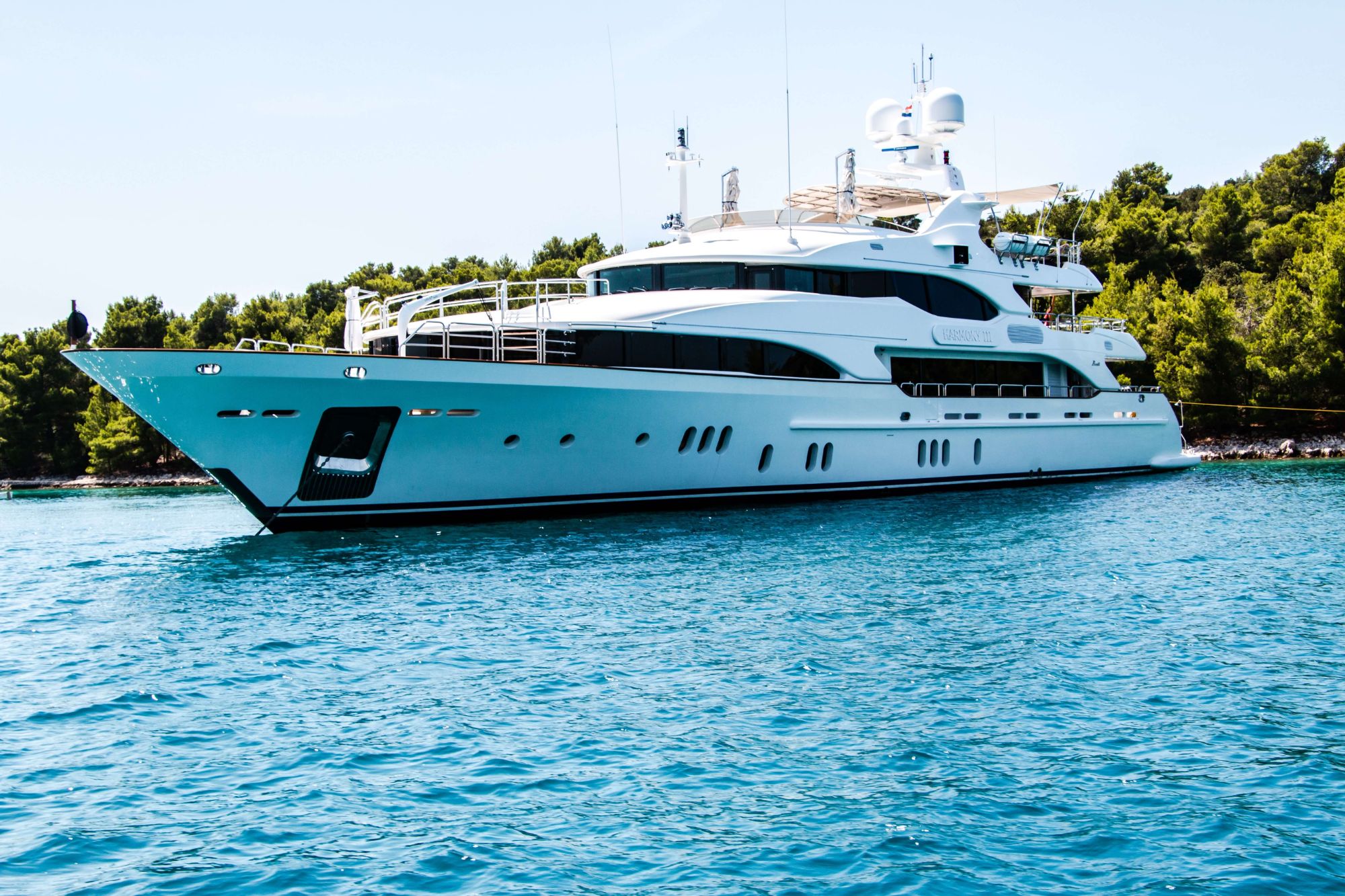
Pros of Motor Yachts:
- Powerful and fast
- Greater technological advances
- Greater deck space, more living volume
- Easier to find suitable crew members
- Easier to operate than a sailing yacht
- Easier to host guests of all personalities
Contras of Motor Yachts:
- Less sustainable, higher fuel consumption
- Less adventurous feel (if you are looking for it)
- Shorter range (can only be powered by motor)
- Engine noise
Motor yacht is probably the first thing which comes to your mind when you think superyachts.
Classy and sleek design, plenty of deck space, comfortable staterooms and lots of entertainment options – all this you can find aboard a motor yacht.
Motor yachts come in different types and sizes and with different purposes. The latest trend is explorer motor yachts, which are explicitly equipped for cruising in cold polar regions.
Yacht Types: Sailing Yachts
Sailing yachts are the second most popular yacht type. If you love the wind and want that classy sporty feel while aboard, then a sailing yacht is the right yacht type for you.
Another advantage is that when not powered by motor, sailing yachts are very quiet. It is only the sound of waves and wind (and an occasional seagull) around you.
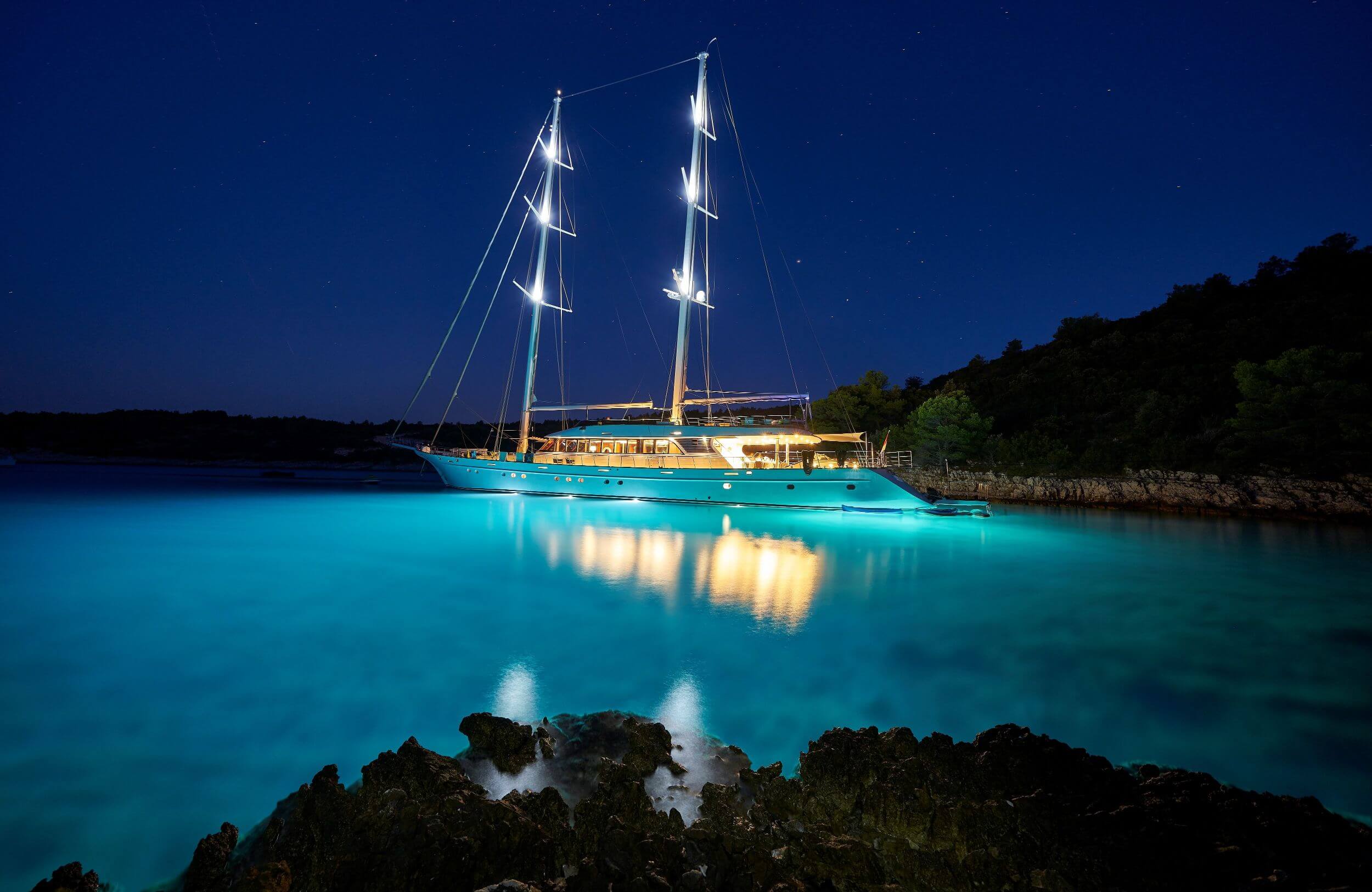
Pros of Sailing Yachts:
- Unique feel of adventure
- Can combine peaceful cruise with racing
- Very quiet when powered by sail
- Lower fuel consumption
- Lower maintenance cost
- Can sail in shallower waters
Contras of Sailing Yachts:
- Tend to be slower that motor yachts (in case you like speed)
- Less stabilization
- Smaller cabin space
- Might have less lifestyle equipment available (Jacuzzi, gym, cinema) …
There are only two types of people out there: sailing yacht fans and motor yacht fans. Rivalry between fans of the two yacht types has become legendary.
Probably, you already know which group you belong to. Nevertheless, we still recommend you charter both sailing and motor yachts to be sure you are making the right choice. If you are still unsure, read about the third yacht type below.
Yacht Types: Catamarans
Catamaran is defined as a vessel with two parallel hulls which are joined together. Due to its form, catamaran is the most stable of all yacht types.
If you are looking for stability and comfort, or have family members who easily get seasick, buying a catamaran is a valid option to consider.
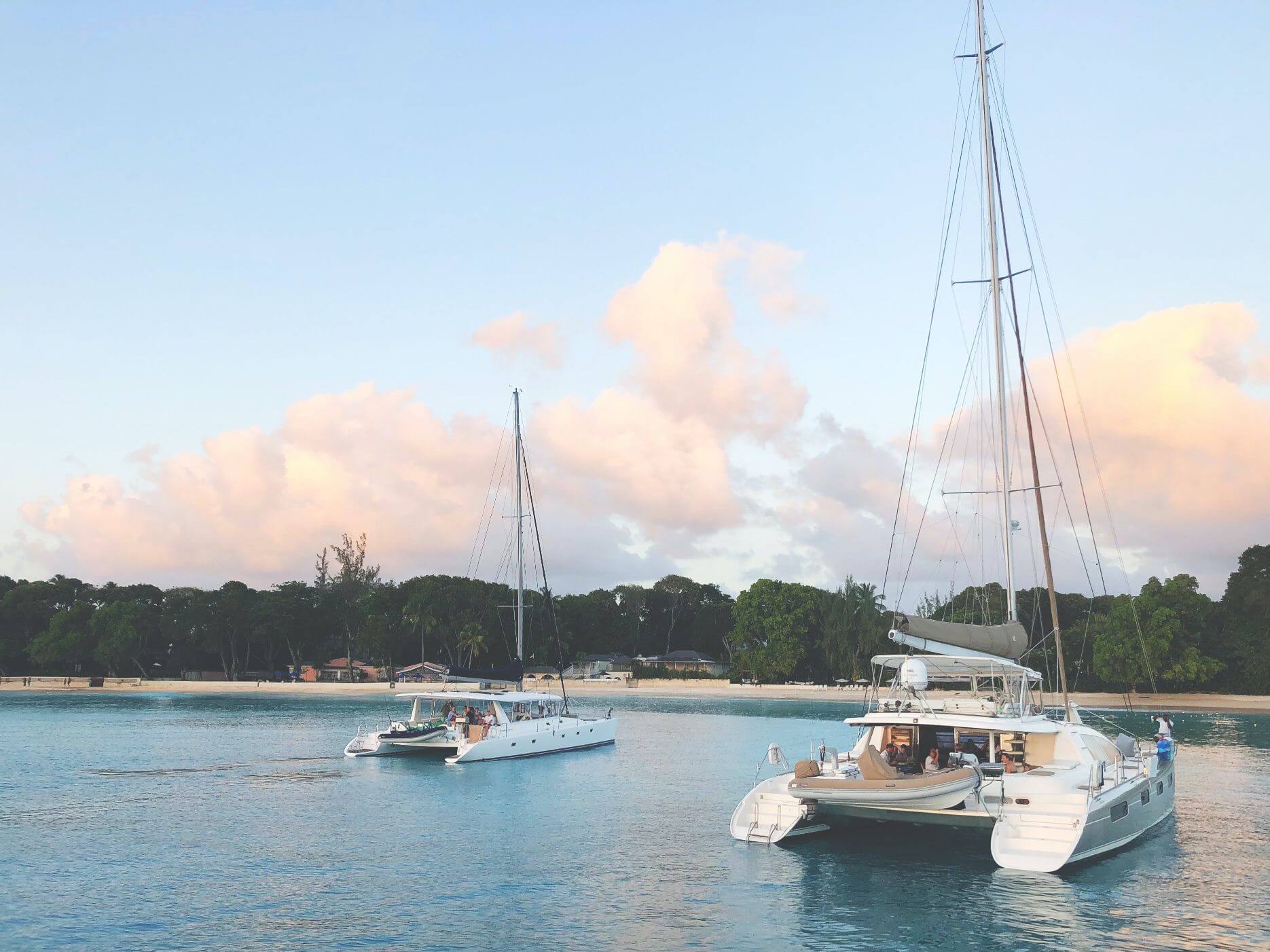
Pros of Catamarans:
- More fuel efficient & sustainable
- More stability
- Can be used in shallow waters
Contras of Catamarans:
- Less volume for staterooms
- Higher dockage rates than for a monohull
- Different sailing feeling compared to a sailing boat
Catamarans offer a great opportunity for taking family vacations, which will leave every family member happy. Since they are more difficult to sink, they are also considered the safest boats.
If you are looking for extra stability, comfort and space, but also do not want to compromise on adventures and possibility to explore shallow waters, catamaran is right yacht type for you.
Yacht Types: Trimarans
Big brother of a catamaran, a trimaran, has even three hulls – one main hull in the center, and two smaller hulls on each side.
You will not see them as often, but there are certainly also big fans of trimarans out there. Trimarans are designed for racing or leisure but are also widely used for military and shipping purposes.
YACHT PRODUCTION TYPES: SERIAL, SEMI -CUSTOM, CUSTOM YACHTS
Now that we’ve covered yacht types, let’s investigate which production options are out there. Unlike the automotive industry where most of the car models come from production lines, the yachting world offers future owners more possibilities.
SERIALS YACHTS
This is the most common and less expensive way to get to your new dream boat. Serial or production yachts are yacht models which are produced by shipyards in various quantities based on model and size.
Serial does not mean that you cannot tune it to your taste though. Manufacturers offer different sets of modifications with certain yacht models. You will likely get to choose between several layout models and different equipment options.
Obviously, if you order a newly build yacht, you are likely to get more space for your improvements, than if you decide to refit an already existing yacht.
SEMI-CUSTOM YACHTS
A good way for owners who wish more character and comfort to their boats but at the same time do not want to order a fully customized vessel, is to order a semi-custom yacht.
Semi-custom yachts stand between serial and fully customized boats. You save a lot of time and effort by picking an existing engineered platform from which to start planning.
Then, together with experienced naval architects and designers, you enhance it up to your expectations by customizing layout (possibly including superstructure) and interiors.
Ordering a semi-custom yacht gives you more freedom to decide how your yacht will look like. Construction time is also much shorter in comparison with a fully customized yacht, since many parts are already designed, engineered and possibly even pre-built.
By ordering a semi-custom yacht, you can shorten construction time from two – three years up to several months!
Shipyards are also less likely to fall behind the delivery schedule, since they have produced similar yachts before and know which time is needed for delivery.
Most semi-custom yachts are designed to suite majority of potential future owners, which means that layout, size, engineering etc will be well thought-through in advance.
Due to extensive previous testing & refining of semi-custom hulls by the shipyard, it is possible that your new yacht will turn out more reliable and problem-free than a fully customized yacht.
CUSTOM YACHTS
If you wish to be unlike anybody else and want to take your dream a step further, a fully custom-built yacht is exactly what you need.
Almost anything is possible and achievable in today’s superyacht building industry. The only considerations are your budget and international safety and security standards, more on which you can read in our article on Safety and Security Onboard Superyachts.
With a custom-made yacht, you can be sure you will get exactly the boat you want, tailored just for your preferences, no other yacht in the world being similar.
Consider longer delivery time and substantially higher cost, since R&D expenses are not shared between yachts of the same series.
Many owners buy a smaller replacement yacht, while they are waiting for their customized dream boat to leave the docks.
A fully customized superyacht is surely the most exclusive type of a yacht one can own.
Yacht Sizes
Now let’s look at different yacht sizes. But first, let’s find out what yacht size actually is.
How is yacht size measured?
Length Overall (LOA) is the most widely used metrics of yacht length. It is measured from the aftmost tip of the hull to the furthermost point of the stem, measured parallel to the waterline. It is probably the only yacht length definition you need to know as an owner.
*For yachting geeks out there, here are other yacht size definitions used in the industry:
Length of Deck (LOD) : deck length excluding bow sprits and other projections. Makes particular sense for sailing boats, since their Length Overall can considerably vary from their Length of Deck.
Length of Hull (LH or LOH): Length of hull including fixed fendering but excluding any bow sprits. It can be shorter than LOA.
Length of Waterline (LWL): length of a boat at the level where the boat sits in the water.
Interesting fact: Did you know that with each additional 1 meter of length, the internal volume of a yacht increases by 6-7 cubic meters? A 40-meter yacht is not just twice longer than its 20-meter companion. According to Cube Law, it is also 6-7 times larger in volume!
Motor yacht sizes by group
Let’s look at different sizes of motor yachts. To make things easier, we divided them into 4 groups.
Please note that the following crew and guest numbers per yacht size are only approximate.
Factual crew numbers will depend on specific yacht length, cruising style, owner preferences and whether the yacht charters or not.
Factual guest numbers will depend on yacht registration type, especially with larger yachts.
22 – 40 meter motor yachts
Motor yachts in of this size are most likely serial production yachts. This means that you can buy a specific yacht model which has been designed before, and choose your own details, such as finishings and furniture.
Yachts of this size will need 4-6 crew members: yacht captain, one or two deckhands, one or two stewardesses, a yacht chef, and presumably an engineer.
22-40 meter long motor yachts normally can host up to 8 guests.
40-60 meter motor yachts
Motor boats of 40 meters length and larger are considered superyachts also within circles of superyacht industry professionals.
This is where operations and crew requirements become considerably more sophisticated. There are also more semi-custom and custom boats in this size segment.
A 40-50 meter motor boat will require a crew of approximately 9-13 crew members, depending on specific owner requirements and cruising / charter preferences.
A possible crew setup would be: yacht captain, first officer, bosun, two engineers, three or two stewardesses, two deckhands, one or two chefs (often a guest and a crew chef).
Crew of a 60 meter motor yacht will count around 20 members.
40-60 meter long motor yachts normally can host up to 12 guests.
60 – 80 meter motor yachts
Here the yachts grow much larger, and so do the costs of maintenance.
A yacht of 60 meters length will have a crew of 20-23 members. A yacht of 80 meters length can have a crew of up to 80 members.
The maximum number of guests will depend on yacht registration type. Many owners choose to keep maximum of 12 guests, since it allows for a simpler regulation regime.
80 – 180 meter motor yachts
A 100 meter motor yacht will require 80-100 members crew. Its tonnage will exceed 500 GT, which means that the yacht will fall under more regulations: STCW, SOLAS, ISSC, ISM and others.
A 170 meter motor yacht can have up to 100 crew members.
The largest yacht worldwide at the time of writing is Azzam, at 180 meters built by Lürssen. Azzam can host 36 guests and a least 80 crew.
Maximum guest number on a yacht of this size can still be only 12 guests. But if the yacht is registered as a passage vessel, it can be significantly more.
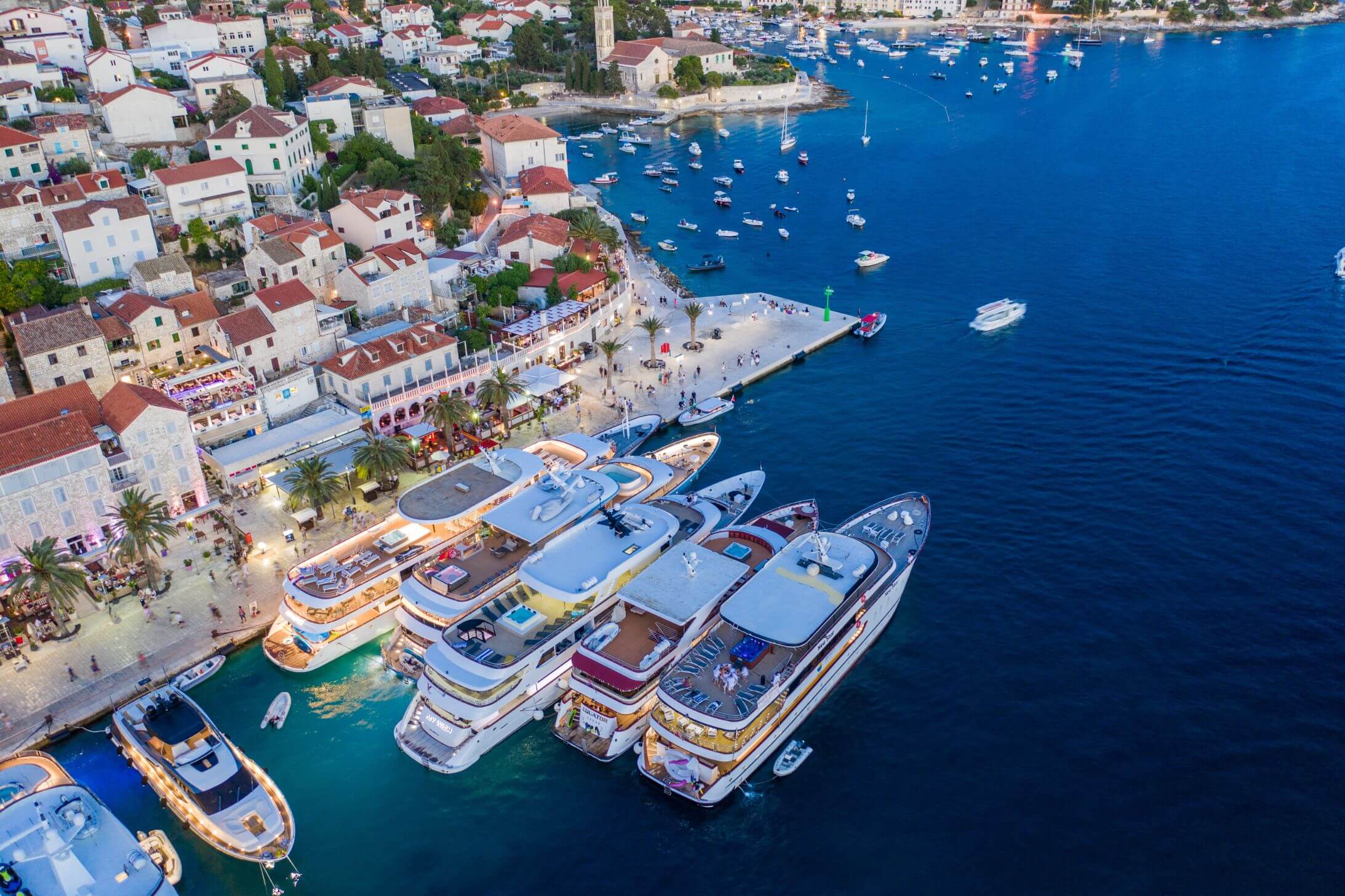
How does yacht size affect my yachting experience?
Size does matter after all.
Let’s look at factors that change with the growing size of a yacht.
While thinking of upgrading to a bigger vessel, do not forget that as the yacht size grows, following factors also increase:
- Yacht price
- Availability and price of marina dockage
- Fuel consumption
- Number of full-time crew members
- Time you can spend away from ports
- Quantity of water and other supplies the yacht can carry
- Functionality and entertainment options
- Complexity of repairs
- Applicability of laws & regulations
- Time needed to sell the yacht
Budget is the main factor which determines how big your boat can be. To learn more about the cost of yacht ownership, read this article.
During the past decade, superyachts increased in size dramatically, and this trend continues. According to an article by Boat International, there has been around 10.000 yachts over 24-meter LOA in the world. Around 80% of them were motor yachts.
Most of the owners start small and upgrade their boats over years. Once you owned a smaller yacht for some time, you will understand exactly what you love about it.
Also, you will know what you want to improve. So why not initiate a new-build of a new more exciting and possibly larger boat? You can still have the older yacht at your disposal, while waiting for the new delivery.
SUMMARY: YACHT TYPES AND SIZES
In this article, we classified all yachts into 3 main types: motor yachts, sailing yachts & catamarans. We also discussed their pros & contras.
We explained the difference between serial production, semi-custom and custom yachts.
Finally, we learned how yacht size is measured and how it affects various aspects of yacht operations. We looked at crew and guest numbers for each yacht size.
Another important factor to consider is whether you want to commission a new-built yacht or buy a second hand one . More on this in our next article .
Drop us an email if you need help with choosing a yacht or booking a yacht charter. We will define your needs and find the best solution together.
Are you a motor yacht, sailing yacht, or catamaran fan?
Comment below!
Article by Olympiada Wohlin-Elkovsky from Yachtowner.co
More Articles
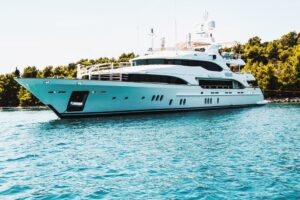
How to Buy a Yacht
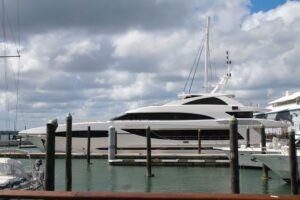
Superyacht Management

Superyacht Websites List
Leave a reply cancel reply.
Your email address will not be published. Required fields are marked *
Save my name, email, and website in this browser for the next time I comment.
Yes, add me to your mailing list
Privacy Overview
- CRUISE TIPS
- Carnival Cruise Line
- Celebrity Cruise Line
- Disney Cruise Line
- Holland America Line
- MSC Cruises
- Norwegian Cruise Line
- Princess Cruises
- Royal Caribbean
- Virgin Voyages
- Windstar Cruises
- Travel Deals
- CRUISE SHIP TRACKER
- Port Webcams

Yachting, a symbol of luxury and adventure, offers a unique and an unparalleled way to explore the world’s waterways. Whether you seek sun-kissed Caribbean islands, the rugged beauty of the Norwegian fjords, or the exotic allure of the Mediterranean, choosing the right yacht for your voyage is essential to creating an unforgettable experience.
Here are some key considerations to help you make an informed decision for your ideal sea adventure:
Understanding The Importance Of Size
Size is more than just a number when selecting a yacht from companies similar to YACHTZOO . It’s about matching your needs with the capacity and capabilities of the vessel.
Smaller yachts, typically under 40 feet, offer intimacy and are easier to navigate, making them ideal for close-knit groups or family outings. They’re also more affordable, both in terms of rental costs and fuel efficiency.
On the other hand, larger yachts, exceeding 40 feet, provide more space, stability, and amenities. They’re suited for longer voyages or larger parties. These yachts often have additional features such as multiple cabins, expansive deck space, and advanced navigation systems.
Moreover, bigger yachts may require more crew, but it depends on several factors, such as the vessel’s complexity, specific demands of the voyage, and the service level expected by guests.
Deciding On The Style That Suits You

Yachts come in various styles, each offering a unique experience. Here’s a closer look at the options for your dream cruise :
- Sailing Yachts
For the traditionalist and eco-conscious sailor, sailing yachts offer a classic charm. They harness the power of the wind, providing a more hands-on sailing experience. This style is perfect for those who enjoy the art of sailing and possess some navigational skills. Sailing yachts also tend to have a lower environmental impact, making them an eco-friendly choice.
- Motor Yachts
Embodying luxury and efficiency, motor yachts are for those who prioritize speed and comfort. These yachts have powerful engines, ensuring a swift journey across the seas.
They are often more spacious, with sophisticated amenities and state-of-the-art technology, providing a smooth and luxurious experience. Ideal for covering long distances quickly, motor yachts are a favorite among those who want to explore multiple destinations in style.
- Motorsailer Yachts
Combining the best of both worlds, motorsailer yachts offer the romance and skill of sailing with the convenience of a motor yacht. These hybrids are versatile, ideal for varied sea conditions, and provide a balanced experience. They are perfect for sailors who enjoy the journey as much as the destination, offering flexibility in navigating the waters.
Choosing the right style depends on your personal preferences, sailing skills, and the kind of experience you wish to have. Whether it’s the thrill of sailing, the luxury of a motor yacht, or the flexibility of a motorsailer, each style promises a unique and memorable voyage.
Prioritizing Amenities For Maximum Comfort
Whether you’re purchasing a superyacht or motorsailer, the amenities play a critical role in defining the comfort and luxury of your voyage. Essential amenities include comfortable cabins, modern bathrooms, a well-equipped kitchen, and ample storage space. However, for the ultimate experience, look for additional features like:
- A jacuzzi or hot tub that offers relaxation and stunning views under the stars.
- A state-of-the-art entertainment system for movie nights or music enjoyment.
- A spacious deck for sunbathing, dining al fresco, or socializing with guests.
For adventure seekers, consider amenities such as:
- Jet skis and paddleboards for thrilling water sports.
- Snorkeling gear to explore the underwater world.
- Fishing equipment for those who want to try their hand at catching fresh seafood.
It’s also worth considering the availability of Wi-Fi and satellite communication, especially for longer trips. These features keep you connected to the world and ensure safety through constant communication. Moreover, climate control systems in cabins can provide much-needed comfort in varying weather conditions, ensuring that every moment onboard is as pleasant as possible.
Navigating Your Budget And Rental Options

Budget is a critical factor in yacht selection, and it’s vital to consider the variability in rental costs. These costs can fluctuate based on several factors, including the yacht’s age, brand, and the specific time of year.
For instance, renting during peak seasons in popular destinations can dramatically increase expenses. In addition to the base rental cost, don’t overlook additional expenditures like fuel, crew, and maintenance. Yacht rental companies often offer packages that include these services, potentially offering more cost-effective solutions.
Be mindful of hidden costs such as port fees, insurance, and taxes, which can also impact your budget. It’s advisable to compare prices and services from different providers to ensure you receive the best value for your money.
When renting a yacht, confirm that the company is reputable and that the vessel is well-maintained and insured. Reviews and recommendations are valuable in making an informed choice. Additionally, consider the flexibility of the rental terms, especially for longer voyages, as this can affect overall costs and convenience.

Choosing the right yacht for your voyage is a balance of size, style, amenities, and budget. By considering these factors, you can select a vessel that meets your needs and enhances your sea adventure. Remember, the perfect yacht is the one that aligns with your vision of a dream voyage. Happy sailing!
Related Articles
What is the draft of a ship, how big is a cruise ship engine, high stakes on the high seas – a guide to casino etiquette on cruise ships, get the cruise addicts newsletter free.
Stay in the loop with the latest cruise news, tips, and reviews directly to your inbox.
Latest Articles
Discovering bodrum: the ultimate gulet holiday guide, airports near port canaveral cruise port.
© Copyright 2024 - Cruise Addicts
- Affiliate Disclaimer
- Privacy Policy

- (954) 633-4878
- [email protected]
Compass Articles
- January 4, 2024
How Do I Know Which Yacht Size Is Right for Me?

Navigating the waters of yacht ownership is both an exhilarating adventure and a significant life decision. The water calls out to enthusiasts around the world, each with their unique vision of a marine lifestyle. But before setting foot on the deck, there’s a fundamental question to mull over: which yacht size aligns with your aspirations and requirements? This comprehensive guide will steer you through the considerations essential in making this pivotal choice, ensuring your yachting dreams set sail on the right keel.
Understanding the Spectrum of Yacht Sizes
The term ‘yacht’ encompasses a broad range of vessel sizes, each with its distinct charm and capabilities. From nimble 30-foot vessels that allow for intimate day trips to magnificent 100-foot-plus sailing palaces designed for long voyages and full-scale social events, yacht sizes vary greatly. A smaller yacht might be perfect for personal getaways or family outings, where ease of maneuverability and maintenance are prized. Larger yachts, conversely, boast ample space for luxurious amenities, crew quarters, and extended stays on the water.
Assessing Your Yachting Lifestyle
Consider your envisioned yachting lifestyle. Are you planning to host dinner parties under the stars, travel to distant shores, or indulge in water sports? Each activity has distinct space and amenity requirements. Frequent entertainers might prefer the expansive decks and salons of larger vessels, while thrill-seekers may opt for models with storage for jet skis and diving gear. It’s the anticipated use—not just the size—that truly defines the suitability of a yacht. After all, the ocean’s allure is enjoyed differently by all.

The Significance of Berth and Crew
The nautical term ‘berth’ refers to the sleeping quarters aboard a yacht. If you anticipate overnight trips with family and friends, the number of berths becomes crucial. Moreover, larger yachts often necessitate a dedicated crew for navigation, maintenance, and service. Consider whether you’re prepared to embrace the camaraderie and privacy dynamics that come with having crew members on board. Understanding these elements in the context of your comfort and privacy preferences is paramount.
Maneuverability, Maintenance, and Mooring
Ease of navigation is often directly proportional to yacht size—smaller vessels typically offer greater maneuverability and require less crew. When it comes to maintenance, the adage ‘more is less’ stands true: larger yachts generally demand more upkeep and operational costs. Similarly, mooring space can be at a premium in popular marinas, and availability is often contingent on the vessel’s size. Balancing these practicalities with your yachting aspirations is essential for a harmonious maritime experience.

Regulatory and Certification Considerations
Yacht size also determines the kind of licenses and certifications required, which can vary significantly by region. Information on necessary qualifications can usually be obtained from local maritime authorities—do not overlook these legalities, as they ensure safe and lawful yachting.
The Fly Yachts Commitment to Your Journey
Embarking on the quest for the ideal yacht size is a voyage in itself—one where knowledge, foresight, and personal reflection converge. At Fly Yachts, we understand that the grandeur lies not solely in the vessel’s dimensions, but in the memories etched upon the waves.
Engage in conversation with a Fly Yachts team member today, and discover how our industry expertise and unrivaled passion for the marine lifestyle can guide you to the yacht that not only meets your needs but exceeds your dreams.

Discover your dream yacht with Fly Yachts by exploring their wide range of vessels on the Yachts for Sale page, well-suited for potential buyers of all interests. Visit their Homepage for a broad overview of their offerings, paving the way for a seamless browsing experience. Further insight into the company’s credibility and offerings is shared on the About Us page. If customization is your goal, the Build a Yacht page breaks down the exciting process of designing your personalized yacht. When adventure calls, the Charter Destinations page provides suggestions for top charter spots around the world. Resourceful and educational reads for yachting enthusiasts can be accessed through the Compass Articles . Owners intent on selling their yacht can find a strategic ally in the Sell Your Yacht page, which offers professional advice and services. For temporary indulgences in sea luxury, the Yachts Charter page showcases exquisite charter opportunities. Fly Yachts also caters to air travel aspirations, presenting a curated list of aircraft on the Aircraft for Sale page. Those eager to stay informed on yachting advancements and news will find fresh content on the Gulfstream News page. And for any support or inquiries, the Contact page simplifies reaching out to Fly Yachts’ supportive team.
About FLY Yachts
Unmatched Industry Knowledge, Paired With Brokers Who Care Equals Yachting You Love.
Recent Posts
Experience luxury redefined for the modern explorer: the buddy davis 58 sport fisherman, the buddy davis 58 sport fisherman: a testament to the evolution of modern luxury boating, unraveling the allure of modern luxury: the buddy davis 58 sport fisherman.

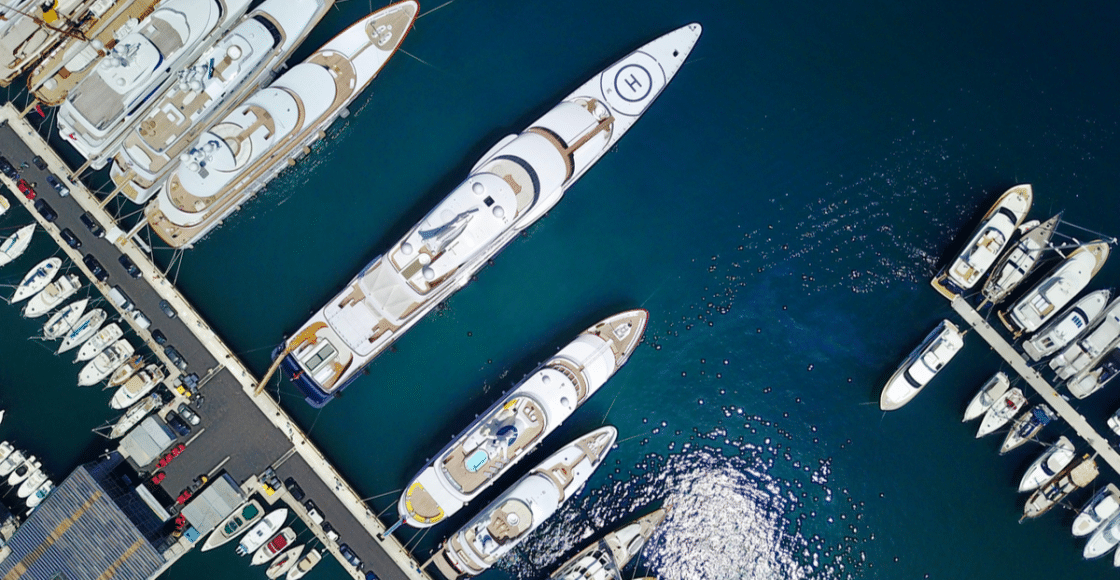
What Size Yacht is Best For You – Ultimate Guide to Choosing a Yacht

Table of Contents
Last Updated on May 19, 2022 by Boatsetter Team
Choosing a yacht is sometimes just as complicated as choosing a new car, if not more. Besides, choosing a yacht is often a lifetime investment, unlike our vehicles which have a shelf life of around 30 years at best. By understanding your preferences, educating yourself on your choices, and testing out some options, you can make an educated decision before making a purchase. Buying a yacht is not something you want to jump into without first weighing out your options.
The size of the yacht you choose will most certainly be an individual decision based on your goals and budget. From going to expos and boat shows to online forums, there’s no shortage of places to get information about yachts. It’s important to gain as much information as possible before making your final decision. This ultimate guide to choosing a yacht will ease the process of figuring out exactly what size yacht is best for you.
Preferences
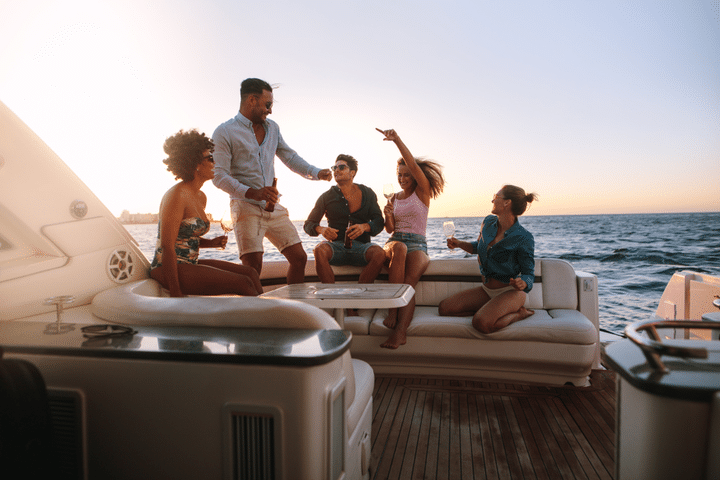
The first step you need to take when deciding on what size yacht is right for you is making a list of preferences. Take some time to think about what’s important to you. What kind of boating will you primarily be doing? Once you’ve figured out your preferences, the decision-making process becomes a whole lot easier. By eliminating choices that don’t fit your needs, you are left with a shortlist of good options.
What will you be using your yacht for most of the time?
This is an important question to ask yourself. Will you be spending multiple nights at sea with your entire extended family? Or will you mostly be making daytime fishing trips with your buddies? The size of your yacht will vary greatly depending on what end of the spectrum you’re on.
How many guests would you like to accommodate?
As with the above question, it’s important to figure out exactly how many guests you’d like to have onboard at any given time. While you may be getting your boat for intimate family trips, you may want to consider something bigger if you’re thinking of hosting birthday or bachelor parties.
What is your budget?
It’s a good idea to look at the short-term and long-term costs when deciding on what size yacht is right for you. Once you’ve made the initial purchase, the price of owning a yacht doesn’t end there. A bigger yacht will ultimately cost you more in transport, storage, operating, maintenance and repairs. This is also a good time to look into insurance and registration fees associated with owning a yacht.
Are you on board with buying something used?
If your preferences aren’t quite aligned with your budget, purchasing a pre-owned yacht may be a good option if you can’t find the right size in your price range. Just like buying a used car, buying a second-hand boat comes with both benefits and risks. Buying from a dealer will usually come with some sort of warranty, whilst purchasing a boat from a private seller could cost you considerably less.
Education

When deciding to take the plunge and buy a yacht , one of the crucial steps you need to take is educating yourself on the types and sizes of yachts available on the market. For most enthusiasts, buying a yacht isn’t a quick decision. Finding out exactly what’s out there will help you narrow down your choices. It’s easy to get distracted when researching online; the key is staying focused and take notes.
Do your research:
By this time, you’ve probably got an idea of the size and style you’re leaning toward. Find out if there are any boat shows, expos, or dealerships in your area. This is also a good opportunity to look up the registration requirements and insurance options, even if it’s just to get an idea of what to expect. There is so much information out there; fine-tune your focus and learn all you can.
Visit some of the local boat dealers in your area: Going to the dealership and looking around can give you valuable information about the yacht you’re thinking of purchasing. Most dealerships have experienced salespeople working who can answer questions and give recommendations. Additionally, most boat dealers will let you take tours of the yachts in their showroom.
Join social media groups or online forums:
Joining online yacht groups like those on Facebook and Twitter is a great place to seek answers when deciding on the right size yacht. Most yacht groups have some knowledge on the subject. The same goes for online forums like Reddit and Quora; a wealth of information at your fingertips if you ask the right people the right questions.
Subscribe to yacht and boating magazines :
Whether in print or online, subscribing to magazines like Yachting Magazine can give you up-to-date information on yachts and sailing. Subscriptions like Passagemaker even have a classifieds section for buying and selling boats. You don’t have to join a magazine club to get the most out of yachting-related publications; take a look online to see what sparks your interest and only subscribe to a few.
Check the ratings and reviews:
It doesn’t make sense to purchase a yacht with poor consumer reviews, especially if it’s due to mechanical issues. Many first-time yacht purchasers will think they found the perfect boat at a steal of a price; this would be a good time to check the reviews for that particular boat. Asking friends, club members, and online forums what the pros and cons are of owning a yacht of their particular size can give you a more personalized review.
Attend a boat show:
Boat shows, like visiting a dealership, allow you to check out potential yachts and sizes as well as pry for information. Most boat dealers aren’t going to spill out all the negative aspects reviewers have pinned on their product, but they will certainly be able to tell you if any of their models fit your preferences. This is also a good place to network with locals in your area who may be attending; introduce yourself as often as possible because you never know where a new friendship might take you.
Go to an expo:
Attending a boat or yacht expo will most likely leave you more confused than confident at first. It’s tempting to want to take a tour of the 130′ party boat or snap a selfie with the new space-age-looking prototype, but gaining information should be your primary goal. The advantage of going to an expo is that you are likely to come away with some reading material to mull over at home. Additionally, you’ll often find other vendors at these types of gatherings like insurance or financing options .
The Test Phase
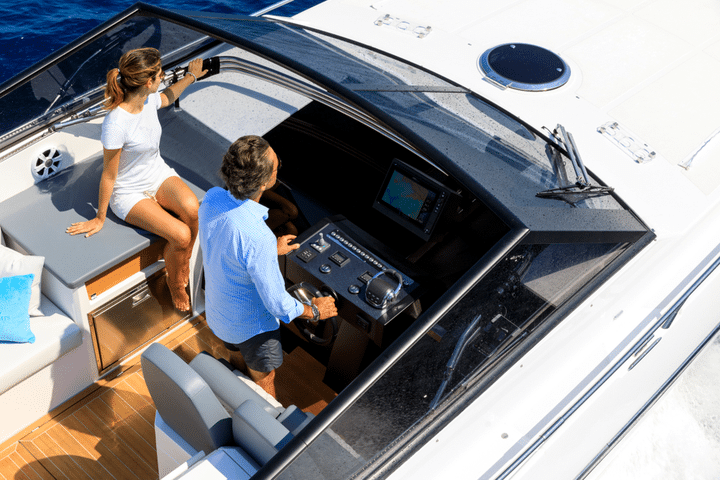
This is one of the most important steps when choosing the appropriate size yacht. There can be a point where your boat is just too big for your needs, budget, or storage capabilities. It’s not as easy to test drive a yacht as for a car, but there are some ways to try out a yacht before purchasing.
Tag along with others:
Chances are you know someone personally or indirectly with the same or similar yacht you are thinking of buying. This might take some finagling, but there’s a good chance someone will take you out. Once aboard, ask questions, explore the boat and ask for a turn at the helm .
Rent a yacht:
Renting a yacht is by far the best way to test out a few options. This method might be pricey, but there’s a good chance you’ll be able to rent a yacht that is the same or similar to the ones on your shortlist. Modern technology has created an avenue linking boat owners with boat seekers making this an easy, streamlined process.
Sizing Up Your Options
The test phase of this process should bring some insight into what size yacht suits your needs. By this time, you should have been able to narrow it down to three or four choices at best. This is a good time to revisit your preferences list to try and eliminate any contenders that don’t fully meet your size and lifestyle criteria. Think of it as a job applicant; you’re trying to narrow down your selection until you’re left with the perfect choice.
Fine Tuning Your Decision
If you haven’t been able to make a decision by now, you most certainly should have narrowed down your choices to two or three. If you are left with only two choices, it’s best to go bigger if that works for your budget and sailing capabilities.
If you’ve already decided on the size and are having trouble choosing between two manufacturers of yachts, this may be a time to revisit and update your preferences. Outside of size, style, comfort, and capability options, what else is important to you. Are you interested in buying products that are made locally? Is the environmental impact of the yacht and manufacturing practices important to you? Going beyond the surface preferences can most often seal the deal, but you will need to go back and do some more research.
Taking the Plunge
If you’ve figured out your preferences, done your research, and tested out your options, you’re ready to make your purchase. Owning a yacht of any caliber is an accomplishment since the decision-making process alone can be taxing. Aside from figuring out an appropriate size, potential captains are also faced with storage, insurance, and registration decisions which add to the effort and excitement of buying a yacht.
There’s nothing like feeling the water moving beneath you as you make the way to the helm of your new yacht. While the steps you need to take to decide what size yacht is best for you may seem time-consuming, you’ll be on the water in no time. Taking the time to make the most educated decision will serve you well in the long run with less anxiety about a big purchase. The online forums and social media sites boast grand adventures for yacht owners with very few stories of buyer’s remorse.

Boatsetter empowers people to explore with confidence by showing them a world of possibility on the water. Rent a boat, list your boat, or become a Boatsetter captain today.

Browse by experience

Explore articles
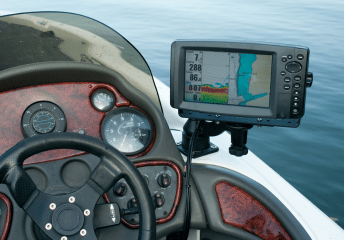
10 Must-Have Boating Accessories You Need Before Setting Sail
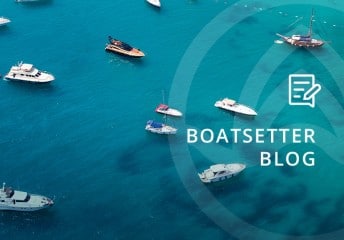
Five Safe Boating Tips for Boaters Visiting Florida
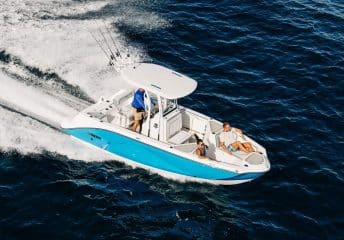
10 Best Luxury Center Console Boats
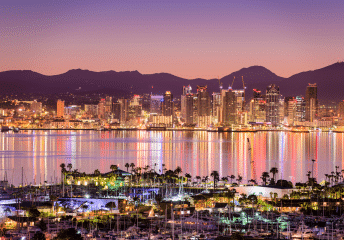
Boating in San Diego: Everything You Need to Know
When is a Boat a Yacht?
Types of yachts – sizes, styles, & categories.
With so many different types of yachts to choose from, it can be hard to know your Flybridges from your Tri-Decks if you’re just starting your search. Although there is a growing number of terms used to describe the different types of yachts out there, many of the terms overlap or are used interchangeably.
If you’re on the market for a yacht, the team here at Van Isle Marina has compiled a review of the different terms you’ll likely come across when cruising through yachts for sale .

a luxury motoryacht
Below is our brief guide to understanding the different terms the boating community has been known to use to describe yachts.
Definition of a Yacht
What exactly makes a yacht a yacht, and not just a big boat? There is no nailed down definition of what makes a yacht a yacht, but most boaters consider a yacht to be any type of sea vessel that is used strictly for recreational or pleasure purposes like cruising , entertaining, water sports, fishing , or year-round accommodations.
Yachts are usually large enough to have some form of sleeping quarters (cabin) on board for overnight trips as well as a kitchen (galley) and a bathroom (head). They are also large enough that they require more than human inputs (i.e rowing) to propel forward.
Yachts are classed by many things, including their mode of propulsion, size, style, amenities, and function.
General Types of Yachts

a sailing yacht
A yacht is first defined either as a sailing yacht, motor yacht, or gulet yacht, and then as a sports or luxury yacht.
- Sailing Yacht: a yacht mainly propelled via wind and sails
- Motor Yacht: a yacht propelled via one or more motors
- Gulet Yacht: a hybrid yacht with both sails and motors
- Open Yacht, Cruiser, Cabin Cruiser, Express Cruiser: an otherwise uncategorized standard yacht for cruising and entertaining
- Luxury Yacht: a yacht that includes high-end finishes and features and the latest in modern performance technology. The term ‘luxury’ can precede any type of yacht, i.e. “luxury motor yacht”, “luxury sailing yacht”, etc.
- Sports Yacht: a yacht geared towards fishing, water sports, or cruising with a sleeker design and more powerful motor for faster cruising speeds. The term ‘sports’ can precede other types of yachts as well, i.e. “sports motor yacht”.

a catamaran
Yacht Sizes
Yachts can further be defined as a superyacht or megayacht, depending on their size.
- Super Yachts are typically 24 meters (78 feet) and above.
- Mega Yachts are typically over 80 meters (260 feet).
Most motor yachts on the market are typically 24 meters (78 feet) or less. There are only a handful of megayachts in the world due to their extravagant price tag.
Yacht Style Categories
Yachts can further be grouped or defined according to their form and function, such as with flybridge, sedan, pilot house, and sportfish yachts, for example.
- Classic Motor Yacht: a yacht that was built between the 1920s and 1970s (before today’s modern technology began dominating modern yacht manufacturing). A modern yacht can be built based on the classic motor yacht style.
- Sedan: a popular yacht style with deck space above the hull and living quarters below. The living quarters of a sedan yacht are enclosed and single-level.
- Flybridge: a sedan-style yacht with an open deck and more comfortable living space above the main bridge of a vessel.
- Daybridge: a multi-level yacht that is even more open than a flybridge. Belize Motoryachts are known for creating this distinctive style of yacht.
- Open or Enclosed: a term used to describe the layout of and access to the flybridge. In an enclosed flybridge, access to the above flybridge is enclosed inside the living space. In an open flybridge, access to the flybridge above is open to the elements.
- Downeast Style: a low-profile yacht with a large working cockpit and small helm station. This highly recognizable style is inspired by the mid-1900s traditional Maine lobster boat. Back Cove yachts are a shining example of downeast-style inspired yachts.
- Pilothouse: A multi-deck yacht like a flybridge with a larger interior main deck.
- Sky Lounge: an enclosed area at the top of the vessel that provides the benefits of the view but with several amenities, protection from the elements, expansive windows and sometimes a sunroof.
- Cockpit Motor Yacht: a yacht with more cockpit space than deck space.
- Sportfish or Sport Fishing Yacht: A yacht used for fishing with a large cockpit, storage space, and the ability to handle rougher seas. These can also be referred to as Flybridge Sportfish or Sportfish Express and are built for longer durations out on the water.
- Convertible: a yacht that combines features of a standard motor yacht with a sportfish yacht to have entertaining space when you need it, and also fishing space when you need it.
- SUV: a yacht that combines features of a standard motor yacht and sport yacht.
- Tri-Decks : a superyacht with three levels of staggered, enclosed living space.
- Expedition Yachts: a large yacht with a deeper displacement hull for more stability and comfort during longer-range trips.
Read a few descriptions of yachts for sale and you’ll soon realize the boating community sometimes seems to have its own language. To accompany this roundup of yacht types, check out our Parts of a Boat post for more information, or jump right into checking out some of the models we at Van Isle Marina have for sale right now.
250 656 1138
2320 Harbour Road, Sidney, British Columbia V8L 2P6 [email protected]
Marina Services
Marina Layout
Yacht Sales
- Share on Facebook
- Link to Instagram
©2024 Van Isle Marina | Design by Caorda
What Size Yacht Requires a Crew? (For Different Lengths)
While smaller yachts can be operated by a single person, larger yachts require a trained crew to operate them safely. Different types of yachts also have different crew needs, which can depend on the yacht's size, features, and intended use. In this article, we'll let you know what size yacht requires a crew, and how many crew are needed for different types and lengths of yacht.
Yachts that are over 30 feet in length require a crew to operate them safely. A yacht that is 100 feet in length requires a crew of at least four to six people, including a captain, engineer, stewardess, and deckhand. Meanwhile, yachts that are under 30 feet in length can be operated by a single person.
Recreational yachts are typically smaller and used for leisure activities like fishing, cruising, and water sports. Since these yachts are usually 30 feet or smaller, they can be operated by a single person without a crew. Let's see how many crew members are needed for other types of yachts.
- If the yacht is under 30 feet and is being used for recreational cruising, a crew of two is usually sufficient.
- A 90-foot yacht with multiple decks and luxury amenities may require a crew of 8–12 people, including a captain, first mate, chef, stewardess, and deckhand.
- For sailing yachts between 30 and 50 feet, a crew of four to six is typically required.
- A small superyacht may have a crew of around 20 people, while a larger one may require a crew of 50 or more.
- The cost of hiring a full-time yacht crew can range from $50,000 to $200,000 per crew member per year.
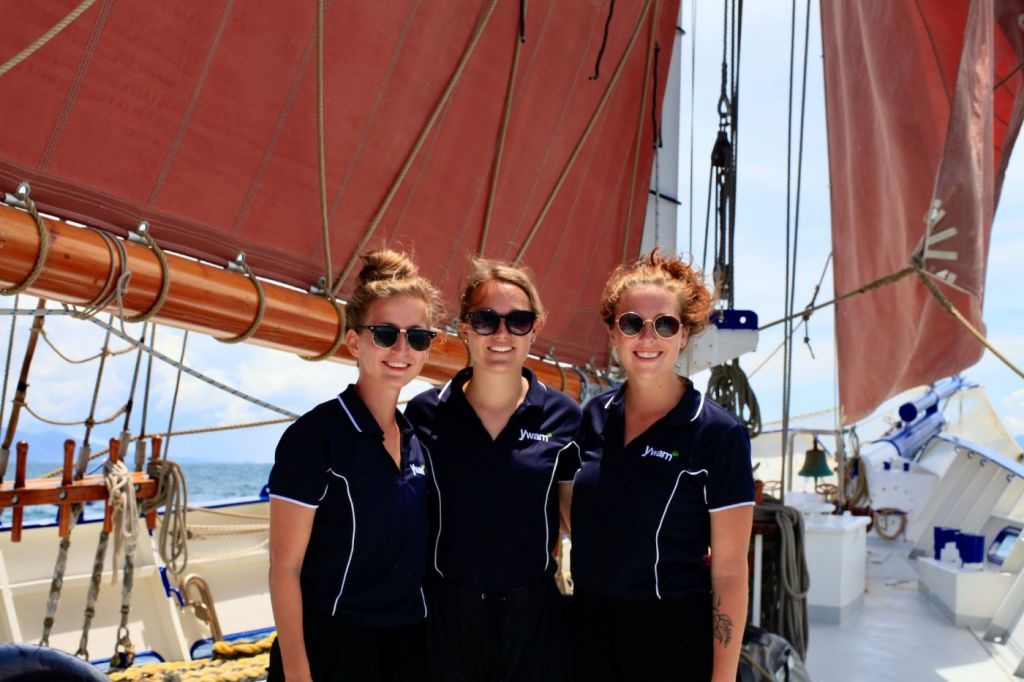
On this page:
Crew requirements for different yacht sizes, yacht types and their crew needs, the cost of hiring a yacht crew and the role of each member.
The size of the yacht is a key factor in determining whether you will need a crew and how many crew members you will require. Below is a table summarizing the crew size requirements for different yacht sizes:
Crew size for yachts under 30 feet
Yachts that are under 30 feet in length are generally small enough to be operated by a single person. However, you still need to have some experience and knowledge of boating to operate them safely. It is also recommended to have at least one additional person on board for safety reasons.
If the yacht is being used for recreational cruising, a crew of two is usually sufficient. You may also need to obtain a recreational boating license depending on your location.
Not sure how to get a boating license? Find which state you're in and get a boating license here.
Crew size for yachts between 30 and 75 feet
Yachts that are between 30 and 75 feet in length may require a crew. These yachts are designed to be operated by a small crew or a couple, with one person serving as captain and the other as crew.
If you have experience and the yacht has upgraded features like autopilot, you may be able to captain your own yacht without a crew. However, if you are new to yachting or the yacht has more advanced features, you may need to hire a crew.
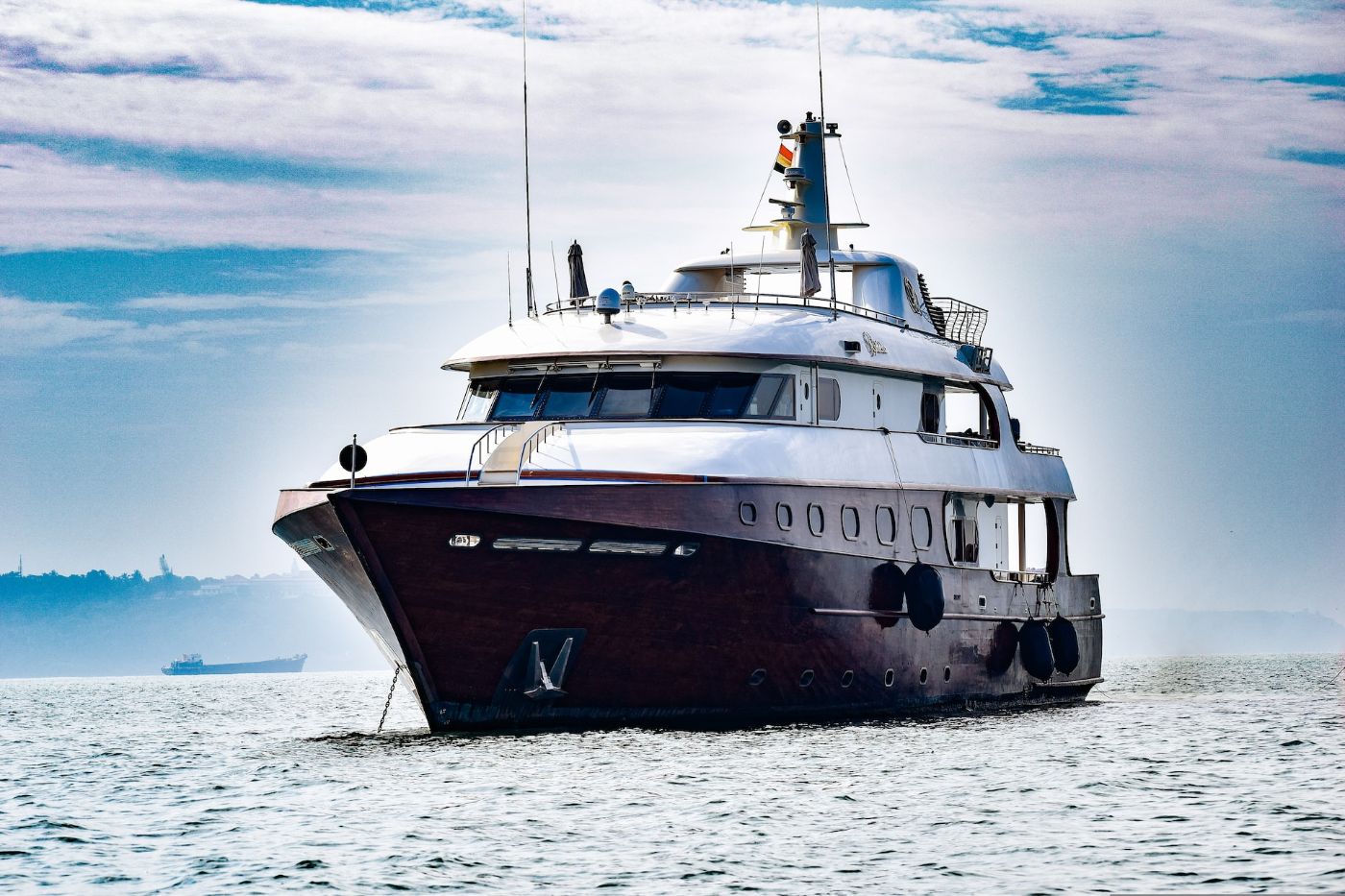
For recreational cruising, a crew of two to four people is usually sufficient . For larger yachts, there may be additional crew members such as a chef, stewardess, or engineer.
Crew size for yachts over 75 feet
Yachts that are over 75 feet in length generally require a crew to operate them safely. The exact number of crew members you will be based on the size and features of the yacht.
- A 90-foot yacht with multiple decks and luxury amenities may require a crew of 8-12 people, including a captain, first mate, chef, stewardess, and deckhand.
- A 100-foot yacht with advanced navigation and communication systems may require a crew of 10-15 people, including a captain, engineer, deckhand, chef, stewardess, and possibly a security officer.
- A 120-foot yacht with a helicopter pad, swimming pool, and other high-end features may require a crew of 12-20 people, including a captain, engineer, deckhand, chef, stewardess, helicopter pilot, and other specialized staff as needed.
Crew size for yachts over 300 feet
Bigger yachts require more crew members because they tend to be more complex and have more systems and equipment that need to be maintained and operated. Additionally, larger yachts typically have more amenities and features that require specialized staff, such as spa therapists, dive instructors, and security personnel.
A yacht that is 300 feet or more in length may have multiple decks, a helipad, a swimming pool, a movie theater, a gym, and other luxurious amenities that require a larger crew to operate and maintain.
In addition, larger yachts may require more crew members to ensure the safety of the guests and the vessel, especially when navigating in challenging waters or during adverse weather conditions. Larger yachts also often provide a higher level of service, which requires more crew members to ensure that every guest's needs are met.
Different types of yachts have different crew needs, which can depend on the yacht's size, features, and intended use. Here's what you need to know about yacht types and their crew needs:
Crew size for recreational yachts
Recreational yachts are typically smaller and used for leisure activities like fishing, cruising, and water sports. Yachts that are 30 feet or smaller can usually be operated by a single person without a crew.
However, larger recreational yachts, like those in the 50-100-foot range, may require a small crew for maintenance and management.
Crew size for sailing yachts
Sailboats are a popular type of yacht used for racing, cruising, and exploring. For sailing yachts between 30 and 50 feet, a crew of four to six is typically required. This crew would include a captain, a first mate, a cook, and one or two deckhands.

For yachts over 50 feet, the crew size can range from six to 20 or more. This is because some yachts may also have additional staff, such as a chef, a stewardess, and a masseuse. These staff members are typically hired to provide luxury services to guests onboard.
One of the hidden costs of buying and owning a 50-foot yacht is the costs for staff and crew, which ranges around $50,000 - $150,000 per year.
Crew size for superyachts
Superyachts are the largest and most luxurious yachts on the market, typically measuring over 100 feet in length. A small superyacht may have a crew of around 20 people, while a larger one may require a crew of 50 or more.
Larger superyachts with more amenities and more guests on board will require a larger crew to ensure that all aspects of the vessel are properly maintained and operated. The team will typically include a captain, first mate, engineer, chef, stewardesses, deckhands, and other specialized roles depending on the yacht's amenities.
Some owners may prefer a smaller crew to maintain a more intimate and personalized experience, while others may opt for a larger crew to ensure that all tasks are handled efficiently and to the highest standard.
Crew size for commercial yachts
Commercial yachts are required to have a crew size that is appropriate for the size and type of the vessel, as well as the number of passengers on board. The crew size can vary greatly depending on the yacht's size, amenities, and intended use.
In general, larger yachts will have a larger crew, while smaller yachts may only require a few crew members. For example, a small yacht that is used for day trips or short-term charters may only require a captain and a mate. However, a larger yacht used for extended charters or as a luxury hotel at sea may need a larger crew.
The crew size for commercial yachts is regulated by various maritime authorities, such as the International Maritime Organization (IMO) and the United States Coast Guard (USCG). These authorities have established minimum crew requirements based on the size and type of the yacht, as well as the number of passengers on board.

Based on USCG requirements, a commercial yacht that is less than 100 gross tons and carries up to 12 passengers must have at least one licensed captain and one crew member. If the yacht carries between 13 and 36 passengers, it must have at least two licensed crew members. For yachts that are over 100 gross tons, the crew size requirements will be higher.
A captain license costs around $700 - $800 , but this may vary according to the country as well as potential extras you might need to purchase.
Crew size for luxury yachts
Luxury yachts are designed for comfort and style, typically featuring high-end amenities like spas, gourmet kitchens, and entertainment systems.
Luxury yachts require a larger crew because they are typically larger, more complex, and more luxurious than other types of boats. A larger crew is necessary to ensure that everything runs smoothly and that the guests have an enjoyable and comfortable experience on board.
Here are some of the reasons why luxury yachts require a crew of 10-30 persons:
Safety: A larger crew is necessary to ensure the safety of the guests and the yacht. The crew must be trained and experienced in handling emergency situations, such as fires, medical emergencies, and adverse weather conditions.
Navigation: Luxury yachts require a skilled crew to navigate the vessel safely and efficiently. The captain and crew must be familiar with the yacht's systems, equipment, local waterways, and navigation rules.
Maintenance: Luxury yachts require constant maintenance to keep them in top condition. A larger crew is necessary to perform routine maintenance tasks, such as cleaning, painting, and repairing the yacht's systems and equipment.
Service: Luxury yachts are known for their high level of service and hospitality. A larger crew is necessary to provide guests with personalized service, including gourmet meals, housekeeping, and other amenities.
Entertainment: Luxury yachts often have a variety of entertainment options, such as water sports equipment, movie theaters, and music systems. A larger crew is necessary to operate and maintain these amenities, as well as to provide instruction and assistance to the guests.
The cost of hiring a full-time yacht crew can range from $50,000 to $200,000 per crew member per year. This includes their salary, benefits, and any other expenses associated with their employment, such as training and uniforms.
Here's a breakdown of the average annual salaries for different yacht crew positions:
The roles and responsibilities of the captain
- Responsible for the overall operation of the yacht including navigation, safety, and communication with other vessels
- Must have extensive knowledge of waterways
- Must make quick decisions in case of emergency
- Must hold valid Merchant Mariner Credential (MMC) issued by USCG
- For yachts over 100 gross tons, a captain must hold a USCG license for appropriate tonnage and route
- May need to hold specific endorsements, such as a towing endorsement or a radar observer endorsement
The roles and responsibilities of the captain engineer
- Responsible for mechanical systems on board the yacht such as engines, generators, and other equipment
- Must have a good understanding of how systems work
- Troubleshoots problems that arise
- Works closely with the captain and other crew members
- May be responsible for managing inventory and ordering spare parts and supplies
The roles and responsibilities of the stewardess
The stewardess is the first point of contact for guests and they are responsible for the following:
- Greet guests warmly and show them to their cabins
- Provide information about the yacht and its amenities, as well as local attractions and activities
- Clean and maintain guests' cabins
- Make beds and ensure fresh towels and linens
- Responsible for serving meals and drinks, setting the table, and clearing dishes
The roles and responsibilities of the deckhand
The deckhand is an entry-level position on a yacht and they work under the supervision of the first mate. They are responsible for a variety of tasks such as:
- Cleaning the yacht and handling lines and fenders
- Assisting with navigation and docking
- Maintaining the exterior of the yacht, such as washing and waxing the hull, cleaning the decks and windows, and maintaining the yacht's equipment and machinery
The roles and responsibilities of the chef

- Responsible for providing exceptional culinary experiences for guests
- Plans menus, prepares meals and manages galley and kitchen area
- Plans menus that meet the dietary preferences and restrictions of guests
- Creates menus for breakfast, lunch, and dinner, as well as snacks and appetizers
- Responsible for provisioning the yacht with fresh ingredients and supplies
- Prepares high-quality meals and presents them well
- Manages galley and kitchen area, including cleaning and maintaining the kitchen, managing inventory and ordering supplies, and ensuring that all equipment is in good working order
The roles and responsibilities of the first mate
- Considered as the second in command on a yacht
- Works closely with the captain to ensure the safe operation and navigation of the boat
- Responsible for managing crew and overseeing day-to-day activities on board
- Assists captain with navigation and piloting of yacht
- Monitors weather conditions, charts courses, and ensures the yacht is on track and avoiding potential hazards
- Manages crew and delegates tasks as needed
- May be responsible for scheduling and coordinating crew shifts, managing inventory and ordering supplies, and ensuring that the yacht is clean and well-maintained
- May serve as liaison between guests and captain, ensuring that their needs are met and that they have an enjoyable experience on board
The roles and responsibilities of the second mate
- Assists captain and first mate in navigation and operation of yacht
- Maintains the yacht's navigational equipment, including GPS, radar, and other electronic devices
- Ensures all charts and publications are up-to-date and that any necessary corrections or updates are made.
Leave a comment
You may also like, at what size is a boat considered a yacht (does size matter).
As a yacht enthusiast, it can be exciting to explore the numerous options available to you. Size does matter, but it is equally essential to consider the yacht's …

Do I Need a License to Drive a Boat? (Clear Info for 50 States)

Do You Need a License to Sail Around the World?

How Much Does It Cost To Get a Captain's License?
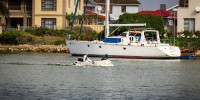
Cost of Buying & Owning a Small Yacht (Detailed Breakdown)
Own your first boat within a year on any budget.
A sailboat doesn't have to be expensive if you know what you're doing. If you want to learn how to make your sailing dream reality within a year, leave your email and I'll send you free updates . I don't like spam - I will only send helpful content.
Ready to Own Your First Boat?
Just tell us the best email address to send your tips to:

The global authority in superyachting
- NEWSLETTERS
- Yachts Home
- The Superyacht Directory
- Yacht Reports
- Brokerage News
- The largest yachts in the world
- The Register
- Yacht Advice
- Yacht Design
- 12m to 24m yachts
- Monaco Yacht Show
- Builder Directory
- Designer Directory
- Interior Design Directory
- Naval Architect Directory
- Yachts for sale home
- Motor yachts
- Sailing yachts
- Explorer yachts
- Classic yachts
- Sale Broker Directory
- Charter Home
- Yachts for Charter
- Charter Destinations
- Charter Broker Directory
- Destinations Home
- Mediterranean
- South Pacific
- Rest of the World
- Boat Life Home
- Owners' Experiences
- Interiors Suppliers
- Owners' Club
- Captains' Club
- BOAT Showcase
- Boat Presents
- Events Home
- World Superyacht Awards
- Superyacht Design Festival
- Design and Innovation Awards
- Young Designer of the Year Award
- Artistry and Craft Awards
- Explorer Yachts Summit
- Ocean Talks
- The Ocean Awards
- BOAT Connect
- Between the bays
- Golf Invitational
- Boat Pro Home
- Superyacht Insight
- Global Order Book
- Premium Content
- Product Features
- Testimonials
- Pricing Plan
- Tenders & Equipment
Yachts for Sale
For aspiring yacht owners looking for a luxury yacht for sale, we have put together a fine selection of luxury yachts and megayachts for sale from all over the world. Search BOAT International's collection of superyachts for sale and filter by type, length, asking price or age. Narrow the results by selecting specific features, or browse by speed, designer and much more.
Explore luxury yachts for sale
Search for everything from motor yachts for sale from renowned Dutch yards including Feadship and Heesen , premium Italian names including Azimut , Sanlorenzo and Benetti , popular British builders Sunseeker and Princess , and American megayachts for sale from US yards such as Westport .
Our collection also features sailing yachts for sale from legendary names such as Royal Huisman , Perini Navi , Nautor's Swan and Jongert , as well as some of the most well-known explorer yachts for sale .
Yacht Features
Propulsion System

What Size Yacht Requires a Crew? Here’s What You Need to Know

Do you dream of owning your own luxury yacht? Are you wondering what size yacht requires a crew and what kinds of responsibilities the crew members have? Whether you are just beginning to plan your yacht purchase or are a seasoned boat owner, this article will provide you with valuable information about the types of crew members, their responsibilities, and the benefits of having a crew on a yacht.
You will also learn how to choose the right crew for your yacht, considerations for hiring a crew, and how to properly care for your yacht crew .
So, let’s dive in and explore the exciting world of yachting!.
Table of Contents
Short Answer
Yachts that are over 30 feet in length generally require a crew to operate them safely.
This is because larger yachts typically require more maintenance and management than smaller ones, and without a trained crew, they can be difficult and dangerous to operate.
Some yacht owners opt to employ a full-time crew, while others may hire part-time or seasonal help depending on their needs.
What is the Definition of a Yacht?
When it comes to understanding what size yacht requires a crew, its important to first define what a yacht is.
A yacht is a large, luxurious vessel that is typically used for pleasure trips.
Yachts are typically motorized, and can vary greatly in size and design.
They may be used for leisurely cruises, racing, or any other type of recreational activity.
Yachts can range from small, open-deck vessels to large, multi-deck superyachts.
Generally, yachts over 80 feet in length are considered to be large enough to require a crew for operation.
The size of yacht that requires a crew depends on the size of the vessel, its intended purpose, and the needs of the owner.
Large yachts may require a larger crew to operate and manage the vessel, while smaller yachts may only need one or two crewmembers.
The crew will typically consist of a captain, engineer, mate, deckhand, steward or stewardess, and chef.
The captain is responsible for the navigation and operation of the yacht, as well as overseeing the other crewmembers.
The engineer is responsible for the maintenance and repair of the yacht.
The mate is responsible for deckhand duties such as cleaning and painting.
The deckhand is responsible for assisting the mate with various tasks.
The steward or stewardess is responsible for housekeeping and other guest services.
The chef is responsible for preparing meals for the guests.
Overall, the crewmembers are responsible for the day-to-day operation of the yacht, including navigation, maintenance, and housekeeping.
They are also responsible for providing a safe and enjoyable experience for the yacht’s guests.
Depending on the size of the yacht, the crew may also be responsible for additional tasks such as security, entertainment, and other services.
What Size Yacht Requires a Crew?

When it comes to yachts, size definitely matters.
If you want to enjoy the luxury of sailing the open seas, you’ll need to consider if a crew is necessary.
Generally speaking, yachts over 80 feet in length require a crew to operate.
Larger yachts may require a larger crew depending on the needs of the owner.
When it comes to crewmembers, they can include a captain, engineer, mate, deckhand, steward or stewardess, and chef.
These crewmembers are responsible for the day-to-day operation of the yacht, including navigation, maintenance, and housekeeping.
Additionally, they are responsible for providing a safe and enjoyable experience for the yacht’s guests.
The captain is typically the most experienced member of the crew and is in charge of all operations on the yacht.
The engineer is responsible for the maintenance and repair of the yachts mechanical systems.
The mate is responsible for navigation and safety, as well as assisting the captain with tasks.
The deckhand is responsible for taking care of the exterior of the yacht, such as cleaning, painting, and polishing.
The steward or stewardess is responsible for providing hospitality services to the guests, such as serving food and drinks.
Lastly, the chef is responsible for preparing meals for the guests.
Having a crew onboard a yacht is beneficial for many reasons.
A crew ensures that the yacht is operated safely, efficiently, and with the utmost care.
They also provide a level of luxury and convenience that many yacht owners desire, such as gourmet meals, drinks, and recreational activities.
Furthermore, having a crew onboard can help to alleviate stress and anxiety, allowing the yachts owner to focus on enjoying the voyage.
In conclusion, yachts over 80 feet typically require a crew to operate.
Depending on the size and needs of the yacht, the crew can include a captain, engineer, mate, deckhand, steward or stewardess, and chef.
Having a crew onboard provides a level of luxury and convenience that many yacht owners desire.
Furthermore, a crew ensures that the yacht is operated safely and efficiently.
Types of Crew Members and Their Responsibilities
When it comes to operating a yacht over 80 feet in length, a crew is necessary.
The size and number of the crew will depend on the needs of the yachts owner, as well as the size and type of yacht.
Common crew members can include a captain, engineer, mate, deckhand, steward or stewardess, and chef.
Each crew member has a unique set of responsibilities that are essential for the successful operation of the yacht.
The captain is the leader of the crew and is responsible for the overall safety, navigation, and maintenance of the yacht.
They must have the appropriate qualifications and experience to safely navigate the vessel and its passengers.
The captain is also responsible for ensuring that the yacht complies with all applicable laws and regulations.
They are often the main point of contact between the yacht and any authorities.
The engineer is responsible for the maintenance and upkeep of the yacht.
They must be knowledgeable in all aspects of the yachts mechanical and electrical systems, including engines, generators, and other onboard systems.
They are also responsible for troubleshooting and repairing any issues that may arise.
The mate is responsible for assisting the captain with navigation, maintenance, and other duties.
They must have an understanding of the vessels systems and be able to take the helm in the captains absence.
The deckhand is responsible for maintaining the exterior of the yacht.
This includes cleaning, polishing, and waxing the hull, decks, and exterior surfaces.
They must also be knowledgeable in the use of deck equipment, such as winches, windlasses, and mooring lines.
The steward or stewardess is responsible for housekeeping duties on board the yacht.
This includes cleaning and maintaining the interior of the yacht, as well as preparing meals and drinks for the guests.
The chef is responsible for preparing meals for the guests and crew.
They must be knowledgeable in all aspects of food preparation and presentation, as well as food safety and hygiene.
These are the typical crew members of a yacht over 80 feet in length.
Each crew member is responsible for ensuring the safe operation of the yacht and providing a pleasant and enjoyable experience for the guests.
An experienced and knowledgeable crew is essential for the successful operation of any yacht.
Benefits of Having a Crew on a Yacht

Having a crew on a yacht is an invaluable asset for any yacht owner.
A crew can provide a variety of services and benefits that can greatly enhance the experience of owning a yacht.
Having a crew on board can increase the safety of the yacht and its passengers.
A crew can help to navigate the yacht through unfamiliar waters, as well as handle any emergencies that may arise.
A well-trained crew can also help to maintain the yacht, ensuring that it is running at optimal performance.
In addition to safety, a crew can also provide a more enjoyable experience for those on board.
A crew can be responsible for housekeeping and meal preparation, freeing up the owner and guests to relax and enjoy the journey.
A crew can also help to organize activities, such as fishing, waterskiing, and sightseeing, to ensure that all passengers are entertained.
Having a crew on board also allows for greater flexibility when it comes to planning a trip.
A crew can help to plan a route, as well as provide advice on the best places to visit, the best restaurants to dine at, and the best activities to enjoy.
Finally, having a crew on board allows for peace of mind when it comes to operating and maintaining the yacht.
A crew can handle repairs and maintenance, as well as provide timely advice on any issues that may arise.
Overall, having a crew on a yacht can provide a wealth of benefits that can help to make the experience of owning a yacht much more enjoyable.
From increased safety and flexibility to more enjoyable activities, a crew can help to make owning a yacht a truly remarkable experience.
How to Choose the Right Crew for Your Yacht
Choosing the right crew for your yacht is an important decision that can make or break your boating experience.
Not only do you need to consider the size of the yacht and the number of crew members required, but you also need to make sure that the crew members you select are experienced, well-trained, and knowledgeable about the type of yacht you have.
When selecting a crew for your yacht, there are a few key factors to consider.
First, you need to make sure the crew members are qualified and certified to operate the vessel.
It is important to have a captain and crew that have the necessary certifications and experience to safely operate the yacht.
Additionally, you should consider the size of the crew you need.
Depending on the size of your yacht and the activities you plan to do, you may need more or fewer crew members.
In addition to experience and qualifications, you should also consider the personalities of the crew members.
You want a crew that is professional and knowledgeable, but also friendly and accommodating.
You want to make sure that the crew you select will be able to work well with the yachts guests and make sure everyone has a safe and enjoyable experience.
Finally, you should consider the cost of the crew.
Different crew members may have different rates depending on their qualifications and experience.
You should also factor in the cost of any additional supplies or equipment needed to operate the yacht, as well as any licensing or permit fees.
With careful consideration and research, you can select a crew that is qualified, knowledgeable, and friendly, and that will ensure that everyone aboard the yacht has a safe and enjoyable experience.
Considerations for Hiring a Crew

When it comes to hiring a crew for a yacht over 80 feet in length, there are a few key considerations to keep in mind.
The first is the size of the yacht.
Depending on the size and layout of the yacht, the number of crew members required may vary.
Larger yachts typically require a larger crew to manage maintenance, navigation, and housekeeping duties.
The second is the type of crew members you need to hire.
Yachts over 80 feet will typically require a captain, mate, engineer, deckhand, steward or stewardess, and a chef.
These crew members are responsible for the day-to-day operation of the yacht, and must be experienced and knowledgeable in their respective areas.
The third is the budget.
Hiring a crew for a yacht of this size can be expensive.
Depending on the size and scope of the vessel, the cost of hiring a crew can range from tens of thousands of dollars to hundreds of thousands of dollars.
Finally, you should also factor in the experience of the crew.
It is important to hire experienced and knowledgeable crew members who are familiar with navigation, maintenance, and housekeeping.
They should also be able to provide a safe and enjoyable experience for the yacht’s guests.
By taking all of these considerations into account, you can ensure that your yacht is well staffed and that the crew is up to the task of operating and maintaining the vessel.
How to Care for Your Yacht Crew
Having a yacht crew can be a great way to make sure your yacht is running smoothly, but it also comes with certain responsibilities.
As the yacht owner, you must ensure that your crew is taken care of and their needs are met.
This means providing them with proper wages, benefits, and a safe and comfortable working environment.
The first step to taking care of your crew is to ensure they are paid a fair wage.
This should be based on the size of the yacht, the type of work they will be doing, and the amount of experience they have.
It’s important to remember that the crew is responsible for the safety and enjoyment of the yacht and its guests, so they must be adequately compensated for their work.
In addition to wages, the crew should also be provided with benefits such as health insurance and paid vacation.
This ensures they are taken care of and that they can take time off if needed.
It also shows that you value their contributions to the yacht and appreciate their hard work.
Finally, you should also provide a safe and comfortable working environment for your crew.
This means making sure the yacht is well-maintained and that all safety protocols and regulations are followed.
It also means providing adequate rest and leisure time for the crew, as well as ensuring that their living quarters are clean and comfortable.
Taking care of your yacht crew is essential for ensuring that your yacht runs smoothly and that your guests have a safe and enjoyable experience.
By providing them with a fair wage, benefits, and a safe and comfortable working environment, you can make sure your crew is taken care of and your yacht is running at its best.
Final Thoughts
As you can see, owning a yacht larger than 80 feet will require a crew to operate.
Depending on the size of your yacht, you may need to hire a captain, engineer, mate, deckhand, steward or stewardess, and chef.
When choosing your crew, it is important to consider their experience, qualifications, and availability.
Additionally, it is important to be mindful of their wellbeing and provide them with a safe and comfortable environment.
Ultimately, having a crew on your yacht can provide many benefits and provide you with a memorable and enjoyable experience.
James Frami
At the age of 15, he and four other friends from his neighborhood constructed their first boat. He has been sailing for almost 30 years and has a wealth of knowledge that he wants to share with others.
Recent Posts
When Was Banana Boat Song Released? (HISTORICAL INSIGHTS)
The "Banana Boat Song" was released in 1956 by Harry Belafonte. This calypso-style song, also known as "Day-O," became a huge hit and remains popular to this day for its catchy tune and upbeat...
How to Make Banana Boat Smoothie King? (DELICIOUS RECIPE REVEALED)
To make a Banana Boat Smoothie King smoothie at home, start by gathering the ingredients: a ripe banana, peanut butter, chocolate protein powder, almond milk, and ice. Blend the banana, a scoop of...
Choosing The Right Boat Size For Ocean Travel: A Guide For Adventure Seekers
- Last updated May 11, 2024
- Difficulty Beginner
- Category Travel

Imagine embarking on a journey across the vast expanse of the ocean, the wind in your hair and the thrill of exploration in your heart. As adventure seekers, the allure of ocean travel is undeniable, but before setting sail, there is a crucial decision to make: choosing the right boat size. In this comprehensive guide, we will navigate the daunting task of selecting the perfect vessel for your oceanic escapades. From considerations of safety and comfort to practicality and budget, this guide will equip you with the knowledge you need to embark on your maritime adventure with confidence and excitement. So, prepare to set sail as we dive into the world of boat sizes and uncover the key factors to consider when choosing the ideal vessel for your oceanic dreams.
What You'll Learn
Importance of choosing the right size boat for ocean travel, factors to consider when deciding on boat size for ocean travel, pros and cons of different boat sizes for ocean travel, recommended boat sizes for safe and comfortable ocean travel.

When it comes to ocean travel, choosing the right size boat is of paramount importance. Whether you are planning a short trip or a long voyage, the size of your boat can greatly impact your safety, comfort, and overall experience. In this article, we will discuss the importance of selecting the right size boat for your ocean travels and offer some guidelines to help you make an informed decision.
Safety is the top priority when it comes to choosing a boat for ocean travel. A boat that is too small may not be able to handle the rough conditions that can arise at sea, such as heavy winds, high waves, and strong currents. On the other hand, a boat that is too large may be difficult to maneuver and can be more susceptible to damage in rough seas. It is crucial to find a boat that strikes the right balance between stability and agility, and is equipped with the necessary safety features to handle ocean travel.
Comfort is another important consideration when choosing the size of your boat. If you are planning an extended trip or have multiple passengers, it is essential to have adequate living space onboard. A larger boat will typically offer more sleeping quarters, storage space, and amenities like a galley, bathroom, and seating areas. Additionally, a bigger boat will generally be more stable, reducing motion sickness and providing a more comfortable ride.
The size of your boat will also affect your overall experience during ocean travel. A larger boat will typically have more room for entertainment and recreational activities. You will have the freedom to bring along additional equipment, such as kayaks, paddleboards, or fishing gear, to enhance your ocean adventures. Moreover, a larger boat often has a longer cruising range, allowing you to explore more destinations and stay at sea for longer durations.
While a bigger boat may seem appealing, it is important to consider your own skills and experience as a skipper. Handling a larger boat requires more expertise and confidence, especially when navigating in tight spaces, docking, or anchoring. If you are an inexperienced boater, it may be advisable to start with a smaller boat and gradually work your way up to a larger vessel as you gain more experience and confidence.
In general, the size of your boat should be determined by factors such as the duration of your trips, the number of passengers, the intended use, and your level of experience. It is recommended to consult with a professional boat dealer or naval architect who can assess your needs and provide expert advice on the ideal boat size for your ocean travels.
To conclude, choosing the right size boat for ocean travel is essential for safety, comfort, and overall enjoyment. By considering factors such as safety features, living space, recreational possibilities, and your own skills as a skipper, you can make an informed decision that will ensure a smooth and satisfying ocean travel experience. Remember, it's always better to err on the side of caution and choose a boat that is well-suited for the conditions you are likely to encounter at sea.
Is it Possible to Travel Before the Start Date of My Visa?
You may want to see also
When it comes to ocean travel, one of the most important decisions you will have to make is regarding the size of your boat. The size of your boat will determine not only the comfort and safety of your journey, but also its overall success. There are several factors that you must consider when deciding on the size of your boat for ocean travel.
- Range and Endurance: One of the primary factors to consider is the range and endurance of your boat. How far do you plan on traveling? Will you be making stops along the way, or do you plan on completing the journey non-stop? A larger boat will generally have more fuel capacity, which means it can travel longer distances without refueling. Additionally, larger boats are typically equipped with larger water tanks, allowing for longer periods of self-sufficiency.
- Crew Size: The number of people traveling with you will also play a crucial role in determining the size of your boat. A larger crew will require more space and amenities. It is essential to make sure that everyone on board has comfortable sleeping quarters, access to fresh water, and sufficient storage space for personal belongings. A larger boat will provide more room for crew members to move around and relax during the journey.
- Safety: Safety should always be a top priority when deciding on the size of your boat for ocean travel. A larger boat will generally be more stable in rough seas and adverse weather conditions. It will also offer greater storage capacity for safety equipment such as life jackets, life rafts, and emergency supplies. Additionally, larger boats tend to have better stability and are less likely to capsize or take on water in challenging conditions.
- Comfort: Comfort is another important consideration when choosing the size of your boat. A larger boat will provide more living space, allowing for comfortable sleeping arrangements, dining areas, and recreational areas such as lounges or sun decks. If you plan on spending an extended period at sea, having enough room to move around and relax can significantly contribute to your overall enjoyment of the journey.
- Sailing Experience: Your level of sailing experience should also influence your decision on the size of your boat. Larger boats generally require more skill and experience to handle and maneuver. If you are a novice sailor, it may be more prudent to start with a smaller boat and gain experience before venturing out on larger vessels. Remember, the size of your boat is directly proportional to its complexity and the skills required to operate it safely.
In conclusion, deciding on the size of your boat for ocean travel involves careful consideration of several factors, including range and endurance, crew size, safety, comfort, and your sailing experience. It is crucial to weigh these factors carefully and make an informed decision that best suits your specific needs and preferences. Additionally, seeking advice from experienced sailors or consulting with boat experts can be invaluable in making the right choice. Remember, choosing the right boat size will significantly contribute to the success and enjoyment of your ocean travel adventure.
Best Destinations for Solo Travel in January
>Title: Pros and Cons of Different Boat Sizes for Ocean Travel
When planning an ocean travel adventure, one of the key decisions you'll need to make is choosing the right boat size. The size of the boat can greatly impact your safety, comfort, and overall experience while sailing the open seas. In this article, we will explore the pros and cons of different boat sizes for ocean travel to help you make an informed decision.
Small Boats (under 30 feet):
- Lower purchase and maintenance costs: Small boats are generally more affordable to purchase and maintain, making them a budget-friendly option.
- Increased maneuverability: The compact size of these boats allows for easier maneuvering in tight spaces and shallow waters.
- Access to smaller ports: Small boats can access smaller, less crowded ports that larger vessels may not be able to reach.
- More intimate experience: With limited cabin space, small boats provide a cozy and personal atmosphere, ideal for couples or solo travelers.
- Limited living space: The cabins in small boats are compact, limiting the amount of living space available and making longer trips potentially uncomfortable.
- Reduced stability: Smaller boats are more susceptible to the effects of rough weather conditions, causing them to be less stable and prone to rocking.
- Less storage capacity: Limited storage space can make it challenging to carry all the necessary supplies for an extended ocean voyage.
- Restricted amenities: Small boats may have limited amenities such as cooking facilities, showers, and onboard entertainment.
Mid-size Boats (30 to 45 feet):
- Comfort and amenities: Mid-size boats offer more living space and amenities compared to smaller boats, providing a more comfortable and convenient experience.
- Improved stability: With a larger size and weight, mid-size boats are generally more stable, making them better suited for long ocean voyages.
- Enhanced safety features: Larger boats often come equipped with advanced safety features such as lifelines, radar systems, and navigation instruments.
- Increased storage capacity: Mid-size boats usually have more storage space, allowing you to carry essential supplies and equipment for extended trips.
- Higher costs: With increased size and complexity, mid-size boats typically come with higher purchase and maintenance costs compared to smaller boats.
- Limited access to shallow waters: The draft of mid-size boats may restrict access to shallower areas, limiting your exploration options.
- More challenging maneuverability: Larger boats require more skill and experience to handle, especially in crowded harbors or tight docking situations.
- Limited availability in smaller ports: While mid-size boats have greater accessibility than larger vessels, they may still face limitations in smaller ports or anchorages.
Large Boats (over 45 feet):
- Spacious living quarters: Large boats offer ample living and storage spaces, providing a luxurious and comfortable experience during long ocean trips.
- Enhanced stability and comfort: Larger hulls and weight contribute to increased stability, reducing the effects of rough seas and offering a smoother ride.
- Extensive amenities and facilities: Large boats often come equipped with various amenities, such as multiple cabins, full-size kitchens, and spacious bathrooms.
- Higher costs: Large boats come with a hefty price tag, not only for purchase but also for ongoing maintenance, mooring, and crew expenses.
- Limited access to smaller ports: The size of large boats may restrict access to smaller marinas and anchorages, limiting your choices for exploration.
- Challenging maneuverability: Maneuvering a large boat requires expertise, and docking can be particularly challenging in crowded marinas or during adverse weather conditions.
- Increased dependency on crew: Operating and managing a large boat usually requires a dedicated crew or additional crew members, adding to the overall expenses.
Choosing the right boat size for ocean travel involves considering various factors, including budget, comfort, safety, and the level of expertise required. Small boats offer affordability and maneuverability but come with limitations in space and stability. Mid-size boats strike a balance between comfort and accessibility but may have higher costs. Large boats provide luxury and stability but require substantial financial investments and experienced crews. Assess your needs and preferences carefully to find the perfect boat size for your next ocean travel adventure.
The Ultimate Guide to Transforming Your Life and Embracing the Nomadic Lifestyle
Ocean travel can be an exhilarating adventure, but it is essential to choose the right boat to ensure safe and comfortable passage. The size of the boat is one crucial factor to consider, as it will determine the boat's stability, seaworthiness, and ability to handle adverse weather conditions. In this article, we will discuss the recommended boat sizes for safe and comfortable ocean travel.
When selecting a boat for ocean travel, it is important to choose a vessel that is large enough to provide stability in rough seas. A boat that is too small may be more susceptible to capsizing or being swamped by large waves. As a general rule of thumb, boats with a length overall (LOA) of at least 30 feet are considered suitable for offshore sailing. However, bigger is not always better, as larger boats may be more challenging to handle, especially for solo sailors or small crews.
Sailboats are a popular choice for ocean travel due to their ability to harness wind power and their fuel efficiency. When considering a sailboat, a length overall of 30-40 feet is recommended for offshore passages. This size range strikes a balance between stability and ease of handling. Additionally, sailboats with a full keel or a modified full keel, which extends the full length of the boat, are known for their stability and better handling in heavy weather.
For powerboats, the recommended size for ocean travel is typically larger than for sailboats. Powerboats should have a length overall of at least 40 feet to ensure stability and seaworthiness. Larger powerboats often have more substantial hulls, deeper drafts, and better fuel efficiency, making them better suited for long-distance ocean travel.
In addition to size, there are other important factors to consider when choosing a boat for ocean travel. The boat's construction should be sturdy and able to withstand the rigors of offshore cruising. Fiberglass is a common material used for boat construction due to its durability and strength. It is also crucial to ensure that the boat has the necessary safety features, such as multiple bilge pumps, navigation systems, and reliable communication equipment.
When planning for ocean travel, it is wise to consult with experienced sailors, attend boat shows, or work with a reputable broker who can provide guidance on selecting the right size and type of boat for your specific needs. Joining sailing forums or clubs can also be a great way to gather insights and connect with experienced offshore sailors.
In conclusion, choosing the right boat size for ocean travel is crucial for safety and comfort. Sailboats with a length overall of 30-40 feet and powerboats with a length overall of at least 40 feet are generally recommended for offshore sailing. However, it is essential to consider other factors such as construction, safety features, and personal experience when selecting a boat for ocean travel. Remember to prioritize stability, seaworthiness, and ease of handling to ensure a successful and enjoyable ocean voyage.
The Transformative Power of Foreign Travel: How Exploring New Cultures Changes You
Frequently asked questions.
The recommended size for ocean travel is generally considered to be a boat that is at least 30 feet long. This size provides enough space and stability to handle the challenges of long voyages in open water.
Smaller boats can be used for ocean travel, but they are generally more suitable for experienced sailors who are familiar with the limitations and risks associated with smaller vessels. It is important to ensure that the boat is well-equipped and properly maintained for safe ocean travel.
When choosing the size of a boat for ocean travel, factors such as the length of the voyage, the number of people on board, the level of experience of the crew, and the desired level of comfort should be taken into account. It is recommended to consult with experts or experienced sailors to determine the most appropriate size for your specific needs.

- Viajera Compulsiva Author Editor Reviewer

- Arjun Yadav Author Editor Reviewer
It is awesome. Thank you for your feedback!
We are sorry. Plesae let us know what went wrong?
We will update our content. Thank you for your feedback!
Leave a comment
Travel photos, related posts.

Is it Possible to Travel When My O1 Visa is Expiring Soon?
- Mar 23, 2024

A Step-by-Step Guide to Applying for a Visa Online for Traveling to Laos
- May 01, 2024

A Comprehensive Guide to Traveling from London to Santorini
- May 10, 2024

The Benefits of Travel Visas: Exploring the Perks of Obtaining a Visa for Your Next Adventure
- May 07, 2024

The Ultimate Guide: How to Travel from Tirupati to Chennai Airport
- May 18, 2024

The Barriers to Achieving Interstellar Travel and How to Overcome Them
- May 12, 2024
Billionaires like Jeff Bezos and Mark Zuckerberg spend six figures a year maintaining their superyachts. Here's how.
- Superyachts are one of the most expensive assets money can buy.
- The true cost of ownership is even more, adding up to millions a year.
- Here's how much it costs to own a superyacht — and what that money is going toward.
Financial advisors are quick to warn prospective owners that a boat is nothing more than a hole in the water in which to throw money. When it comes to superyachts , you'd better have bags and bags of cash.
As one luxury agent told Business Insider at the Palm Beach International Boat Show: "Buying a boat, it's a huge purchase — and nobody needs a yacht."
A superyacht, generally over 30 meters long, is one of the most expensive assets money can buy, with the largest costing more than a lot of real estate or a private jet. Billionaires like Jeff Bezos, Mark Zuckerberg, and Steve Jobs each spent nine figures on their megayachts.
That doesn't include operating costs. Owners should expect to pay about 10% of a yacht's new-build price each year, experts told Business Insider. That's tens of millions of dollars annually for the most luxurious boats.
"It's a small-to-medium-sized business in its own right," said Jeffrey Beneville, a senior vice president at insurance company NFP, where he specializes in consulting clients about yachts.
Unlike many smaller boats, superyachts need staff, not just a captain. Some superyachts have space for dozens of crewmembers , including a chef, engineer, and masseuse for the guests onboard. Each gets an annual salary — the highest-ranking members earn six figures — and benefits. Eric Schmidt's yacht fits a crew of 28 for a ratio of about two crewmembers per guest.
Then there's fuel, dockage fees, routine maintenance, and insurance. The latter hinges on everything from the reputation of a yacht's shipyard to where an owner wants to take it (if a vessel is taking frequent trips to the South China Sea, for example, expect to pay a higher premium). If a superyacht has a support yacht — or a support superyacht, in Bezos ' case — expect to pay another 10% of that boat's price annually.
"The cost to maintain a yacht is so high that they just think that money's getting lit on fire," Matthew Fleissig, the CEO of wealth management firm Pathstone, told BI of his clients who choose to charter rather than own.
One of his firm's clients who does own has a 23-meter yacht valued at $5.2 million. The annual cost to staff, maintain, dock, and insure the boat is $346,297, according to documentation provided to BI. The lion's share is spent on marina fees ($95,970) and maintenance work ($88,408.) While not exactly a Sunfish, that boat is too small to count as a superyacht.
At 106 meters, the Amadea, owned by a sanctioned Russian oligarch , definitely does. The $300 million yacht, which was seized in 2022 and is docked in San Diego, cost $922,000 a month to maintain, a court filing showed: $360,000 for crew salaries, $75,000 for fuel, $144,000 for insurance, $178,000 in dry-docking fees, and $165,000 for maintenance, waste removal, food for the crew, and miscellaneous expenses.
"And that's an inactive yacht that's in the water," NFP's Beneville said.
If it were operational and carrying guests, the costs would be about twice that, or between $20 million and $30 million a year, he added.
Of course, it makes more financial sense for the non-obsessives to charter, and many of Fleissig's clients do. And some owners choose to offer their yachts for charter — the most luxurious cost as much as $1 million a week — to offset the costs.
"If you charter the boat for 50 days a year, it's going to help a lot," Anders Kurtén, the CEO of brokerage firm Fraser Yachts, told BI.
Then again, the running costs don't matter as much at a certain point. "If you're worth $30 billion, it's nothing. And if you're worth $117 billion — and these are the guys we're talking about — they're in it as long as it's still enjoyable for them," Beneville said. "It's not a money thing."
Watch: Why South Sea pearls are so expensive
- Main content

I spent a night in Panama's richest neighborhood, often called a 'little Dubai' or the 'Miami of Latin America'
Posted: May 19, 2024 | Last updated: May 19, 2024
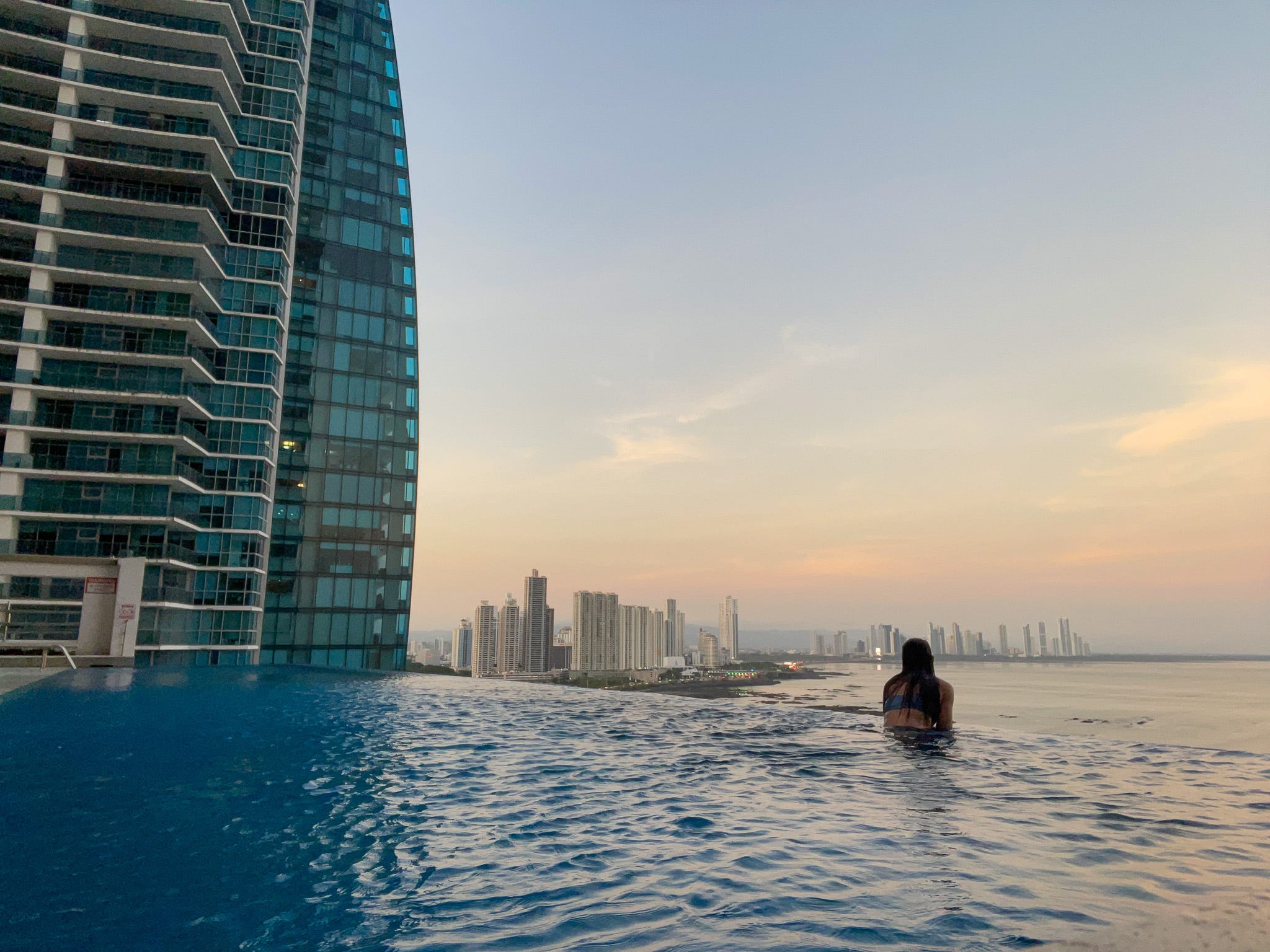
- Punta Pacifica is Panama City's most expensive neighborhood.
- The neighborhood has man-made islands, private marinas, and penthouses worth $5 million.
- I stayed at the five-star JW Marriott Panama and experienced the neighborhood's luxury firsthand.
Duncan McGowan describes Panama City's Ocean Reef Islands as "perfection."
The landscaping is manicured flawlessly, never a leaf or branch out of place. You'd have to hunt to find trash anywhere on the islands, and instead, you're more likely to notice bird songs filling the air.
Looking one way, all you see is the endless ocean. Turn around, and there's a stunning cityscape behind you, McGowan, the president of Punta Pacifica Realty , told Business Insider.
The Ocean Reef Islands are part of Panama's Punta Pacifica neighborhood, and that perfection is exactly what Panama's wealthiest residents seek.
On a recent trip to the country, I saw the opulence that residents chase across Punta Pacifica, Panama's wealthiest neighborhood.
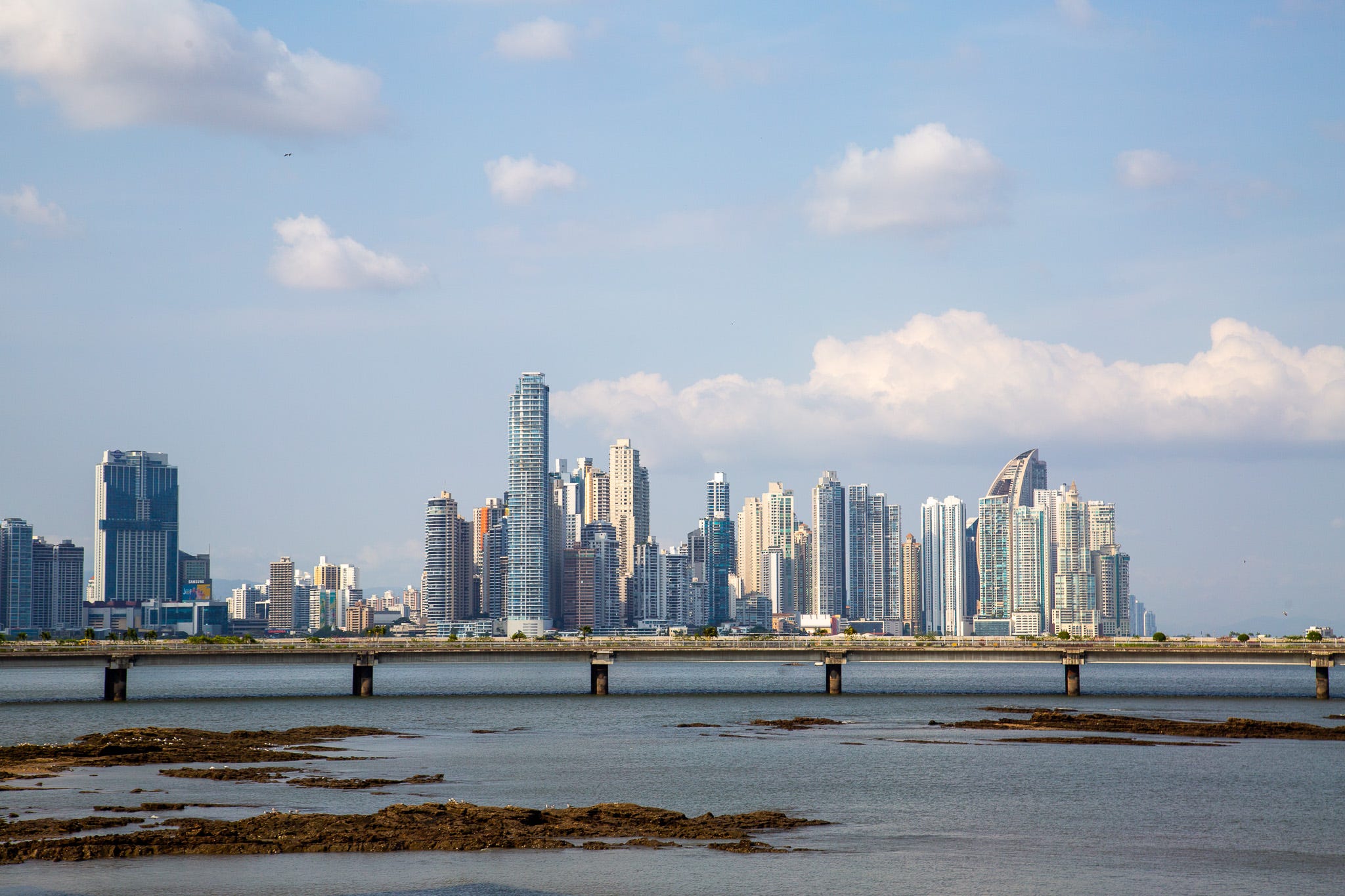
I landed in Panama City, snapped skyline pictures, and texted my friends that I had arrived. Immediately, one pointed out how the city resembled Miami.
I spent my first night in Casco Viejo, Panama City's old town. From the coast, I could look out onto Punta Pacifica, where a grouping of tall buildings reached out to the clouds.
My friend's initial thoughts about Punta Pacifica aren't uncommon. McGowan said people always compare Punta Pacifica to dense cities like Miami, New York City, and Dubai. Central America Living refers to the neighborhood as a "mini-Dubai," and The New York Times said in 2014 that Punta Pacifica is "often called the Miami of Latin America."
The comparisons made sense. All three cities are home to impressive skyscrapers and coastlines. And since Punta Pacifica is home to the Ocean Reef Islands, which were man-made in the early 2000s, it's easy to see how it's grouped with Dubai.
But McGowan said that they are vastly different destinations.
"It resembles all of them, but it has its own flavor," McGowan said. "I think Panama City and Punta Pacifica have matured enough now that it doesn't have to be compared. It stands on its own."
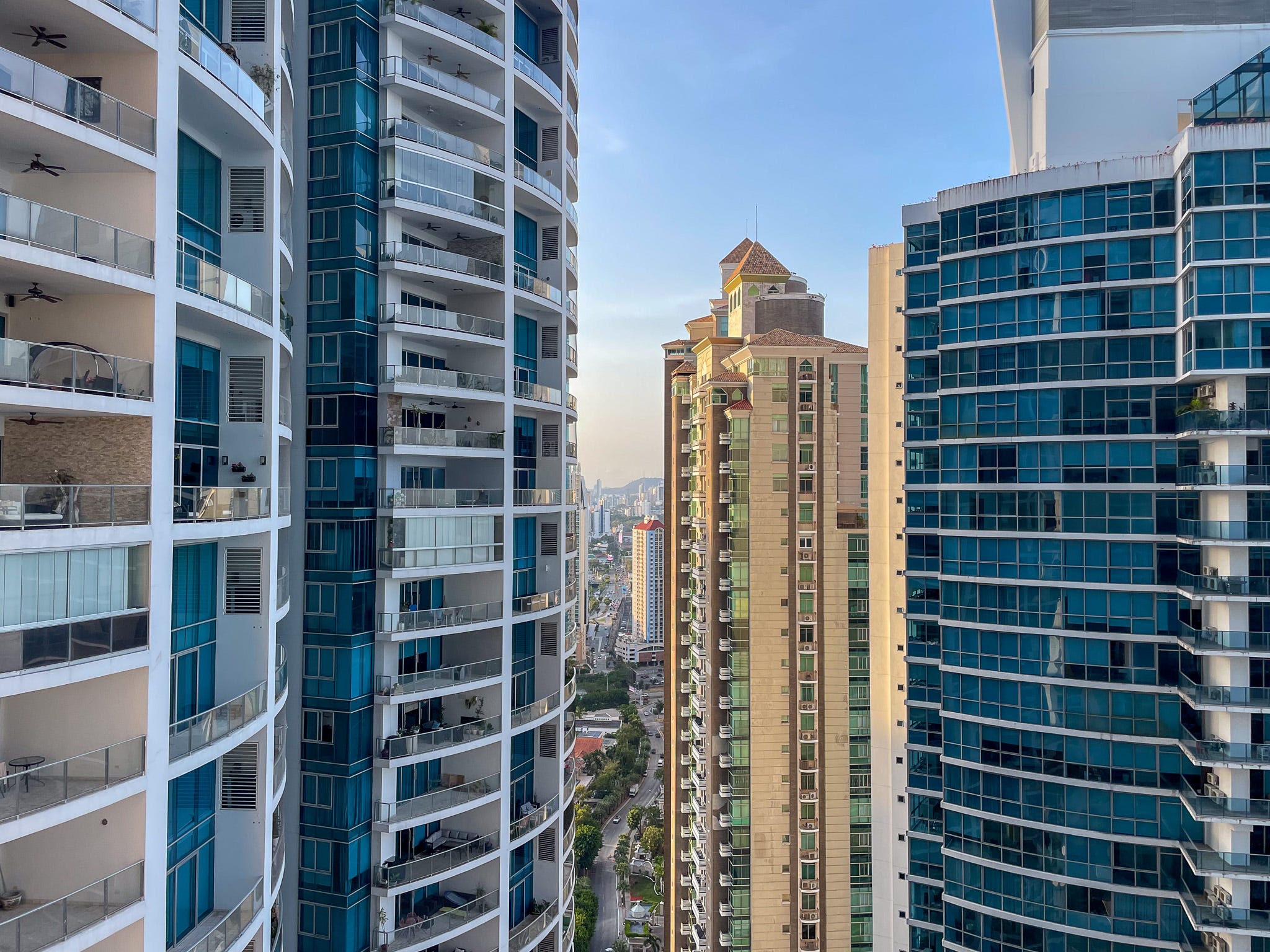
The next day, I headed to Punta Pacifica.
Three decades ago, Punta Pacifica didn't exist.
Created in the early 2000s, a company that built one of Panama City's major highways earned the rights to develop 86 acres of landfill and 73 acres of mainland along an area of the city's coast known today as Punta Pacifica.
McGowan, who has worked in Panama's real-estate market for nearly two decades, said it was designed as a luxury area from the start, and living in Punta Pacifica can come at a steep price.
The neighborhood is home to more than a dozen condominiums and apartment complexes, which can range in price. On the lower end, McGowan said residents can expect to pay around $2,200 a square meter, while prime real estate can cost $7,000 a square meter.
A quick search on Punta Pacifica Realty or Panama Realtor shows one-bedroom apartments for sale at $200,000 and luxury penthouses for as much as $5 million .
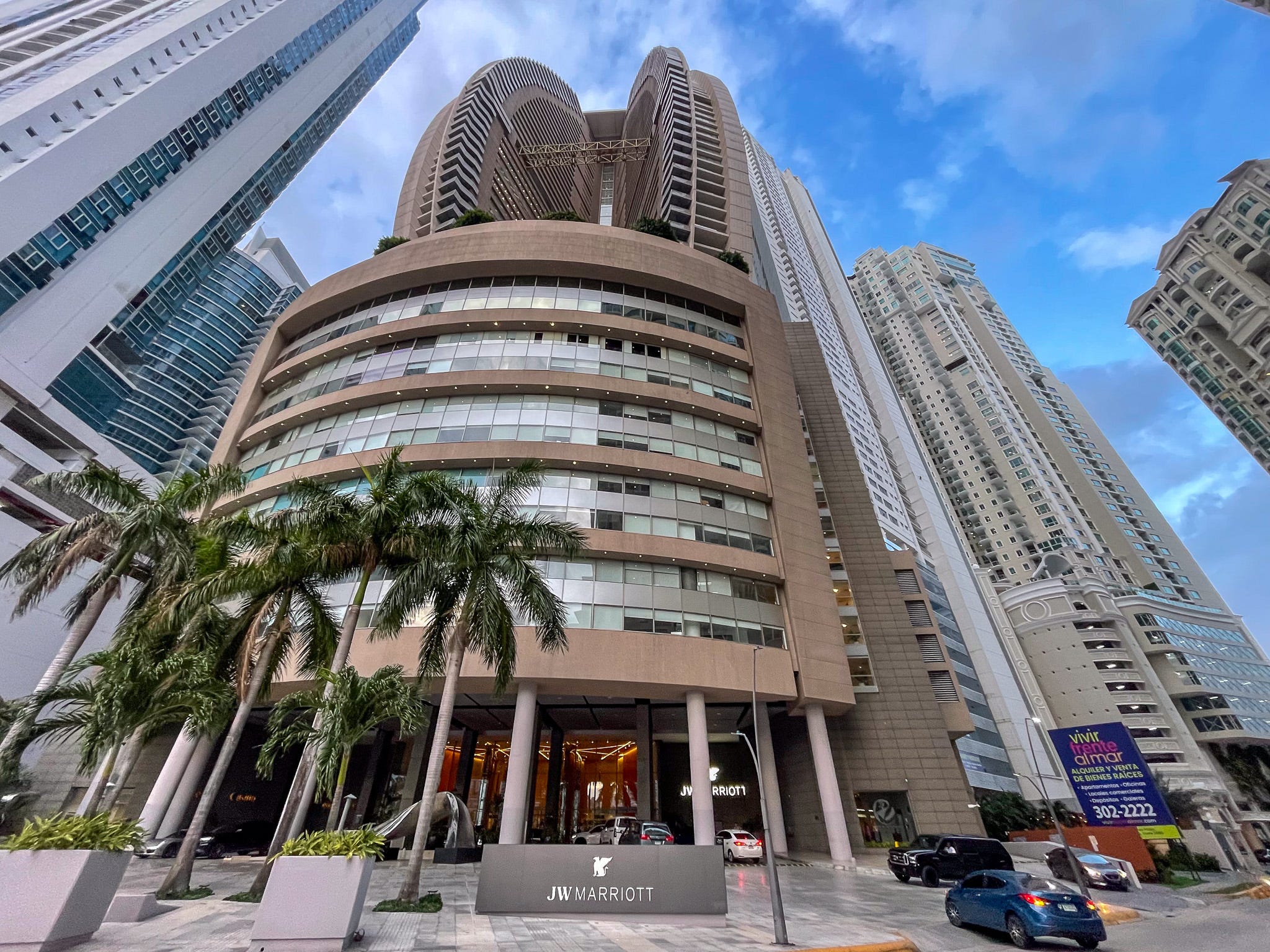
I spent a night in the neighborhood's famous TOC building.
One building stands out in Punta Pacifica's skyline with its sail-like shape: the TOC building.
Today, TOC stands for The Ocean Club, but ask anyone in Panama, and they know it by its former name, the Trump Ocean Club.
The Trump Organization wasn't the building developer; local developer Roger Khafif was. However, the Associated Press reported that the Trump name was licensed to the building to increase its credibility and notoriety.
It became Ivanka Trump's business project in 2006, according to NBC , and since its opening in 2011, the building's history has been riddled with scandals. An NBC and Reuters investigation found that many of the property's brokers, customers, and investors were tied to drug trafficking and international crime.
In 2015, the AP reported that "concerns about overspending and transparency" led the Trump management company to be forced out after a vote by condo owners and board members. However, the Trump Organization refused to accept the vote and claimed that it quit instead. Along with that announcement, the Trump Organization demanded a $5 million termination fee, according to the outlet.
In 2018, the AP reported that Marriott International took over management and renamed it The Ocean Club to keep its TOC branding.
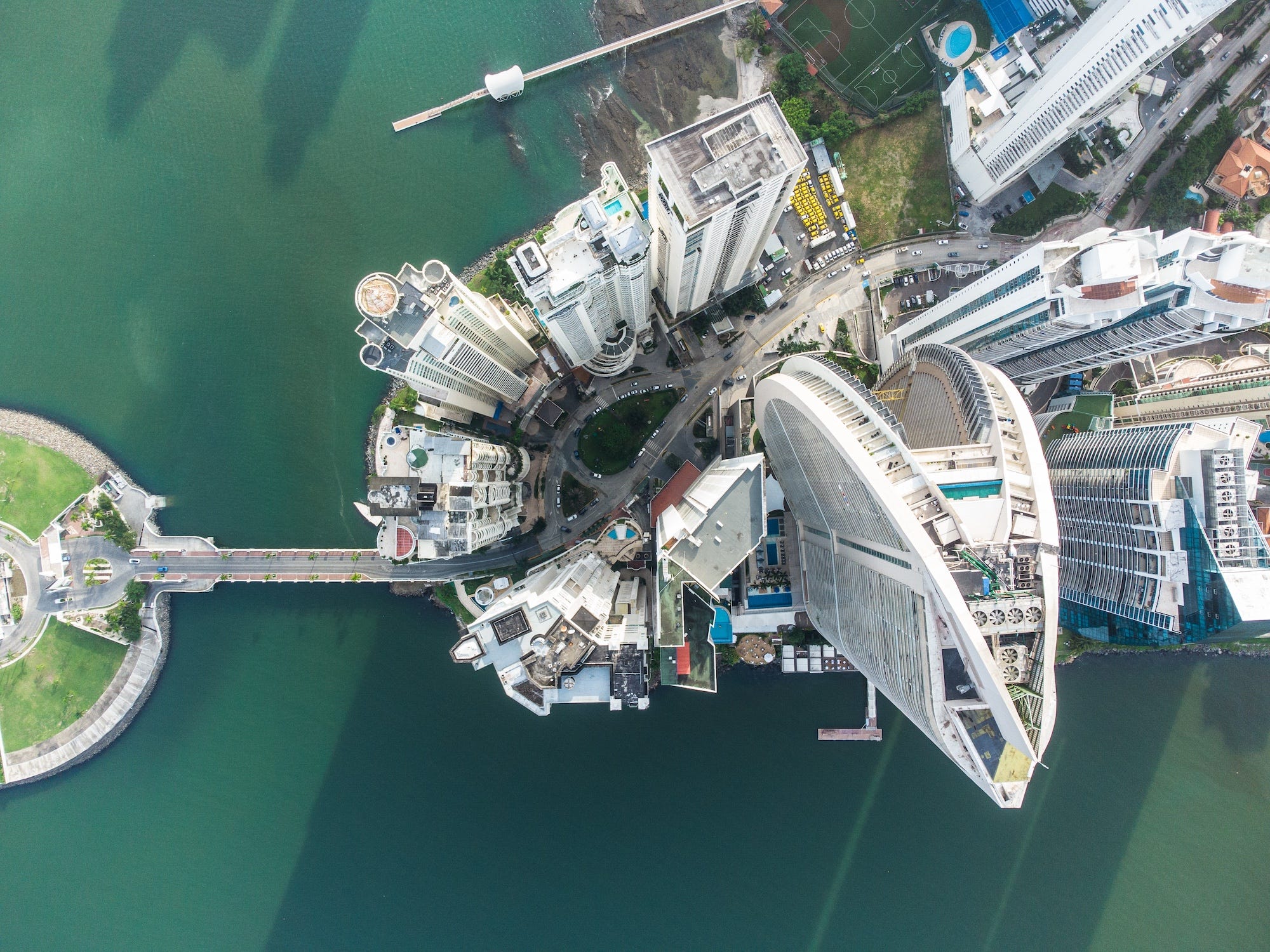
Today, the 70-story building is one of the largest mixed-use buildings in Panama.
The building includes the JW Marriott Panama and its 369 hotel rooms, along with about 630 condos, McGowan said.
It's the neighborhood's only five-star hotel. In addition to the hotel rooms and condos, the building is home to a casino, a handful of restaurants, real-estate offices, a spa, a gym, and multiple salons.
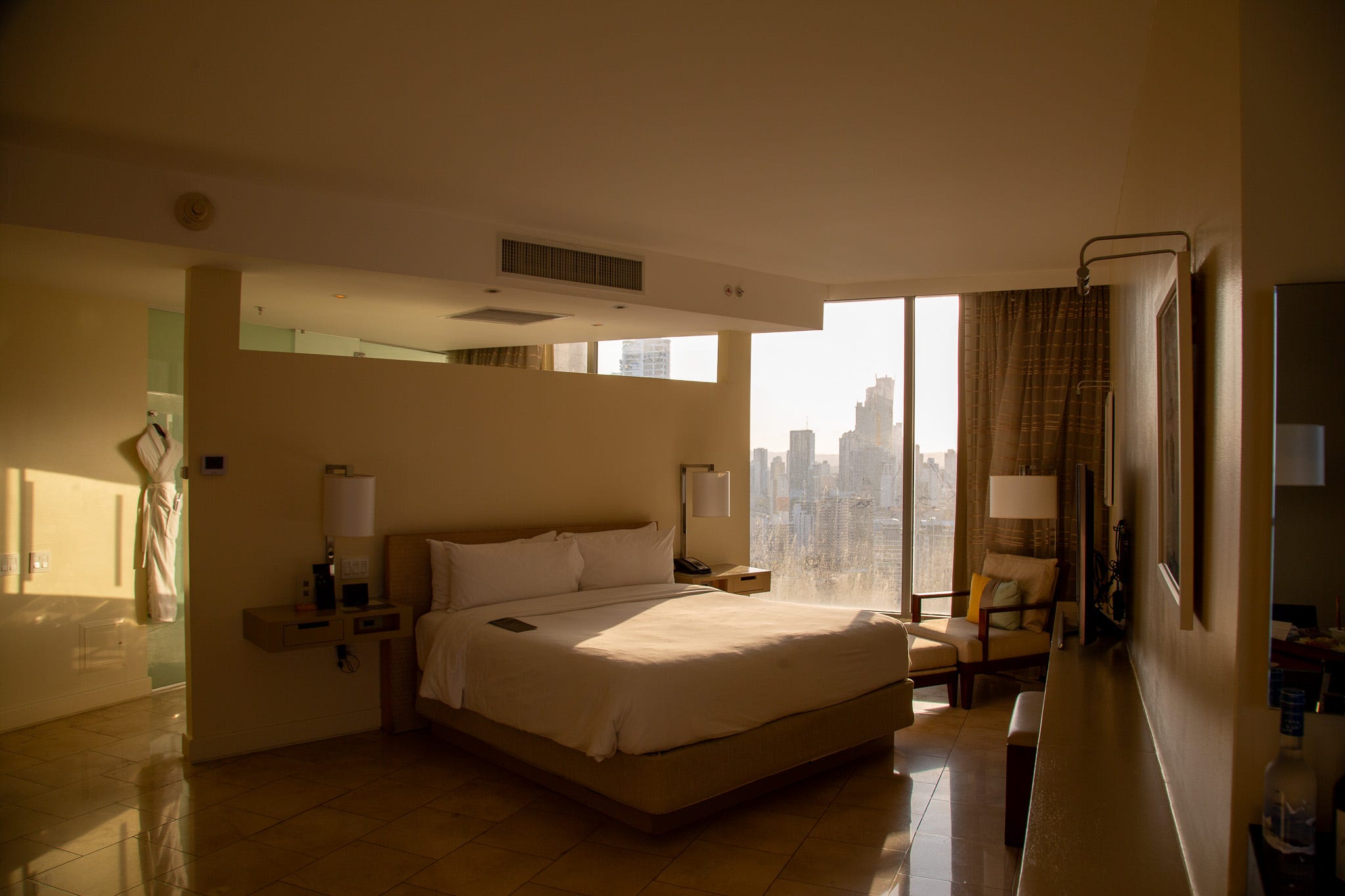
I spent a night in an executive suite at the JW Marriott and experienced Punta Pacifica's opulence firsthand.
A night at the JW Marriott felt like the ideal way to experience Panama's richest neighborhood. So, at 4 p.m., I arrived at the skyscraper and headed to the hotel's lobby on floor 16.
I received a key to my suite and headed to floor 31. Golden light cast across the room as I stepped inside. The suite had an open concept, with a shower and bathtub looking to Panama City's skyline.
According to TripAdvisor, standard rooms typically cost between $193 and $290 for a night. BI received a media rate for the room.

The same views could be seen from the king-size bed.
The suite was spacious, with two of the room's four walls lined with windows. A loveseat, table, and desk filled one area of the room. In another corner, a king-size bed called my name.
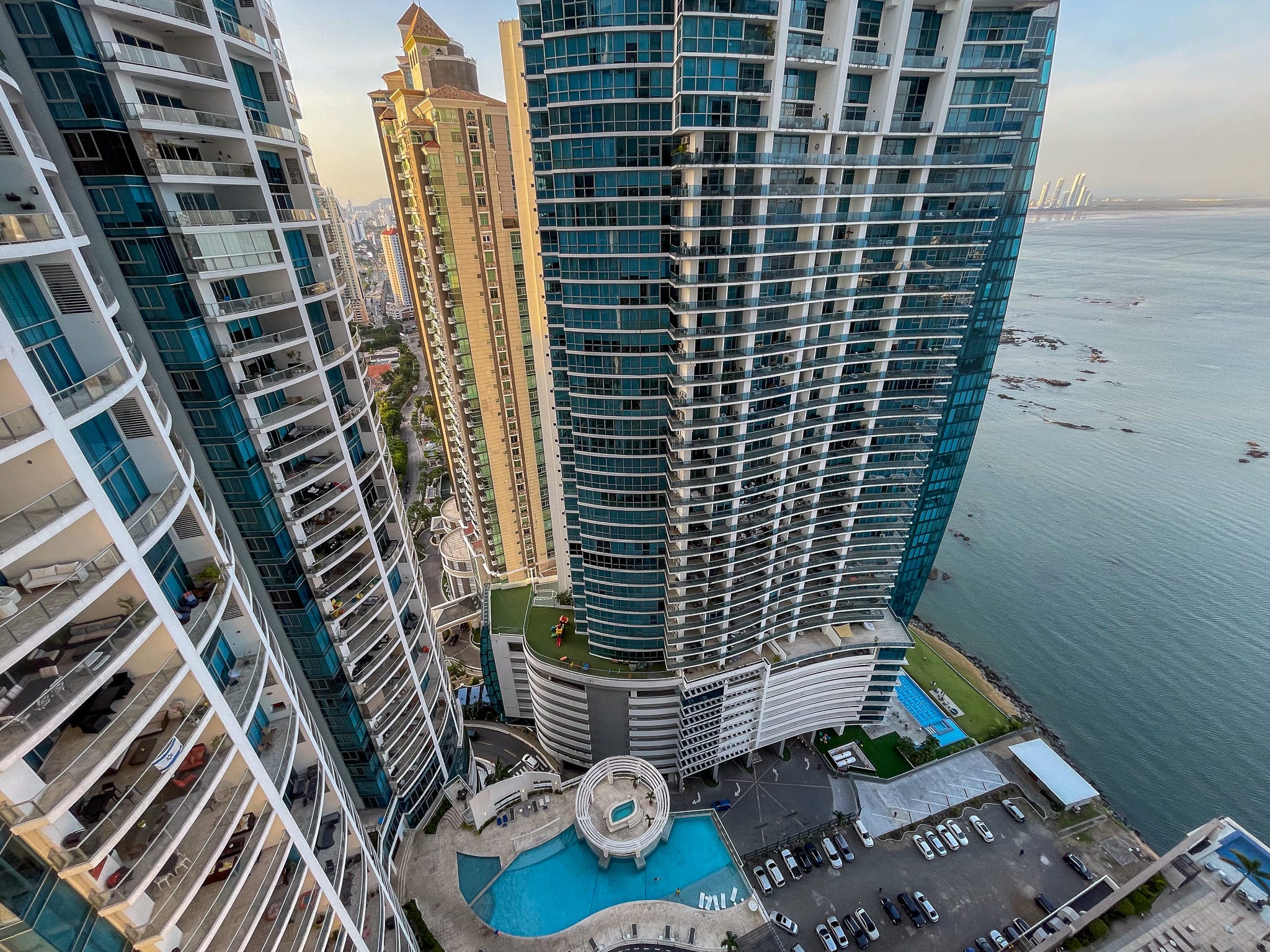
A balcony faced hundreds of condos and a sliver of ocean.
While TOC might be the most recognizable building in Punta Pacifica, it's far from the only condominium in the neighborhood.
A large balcony in my hotel room was just a few hundred feet away from other balconies. Below me, I spotted a bright blue pool, a parking garage, and a playground for the neighborhood children.
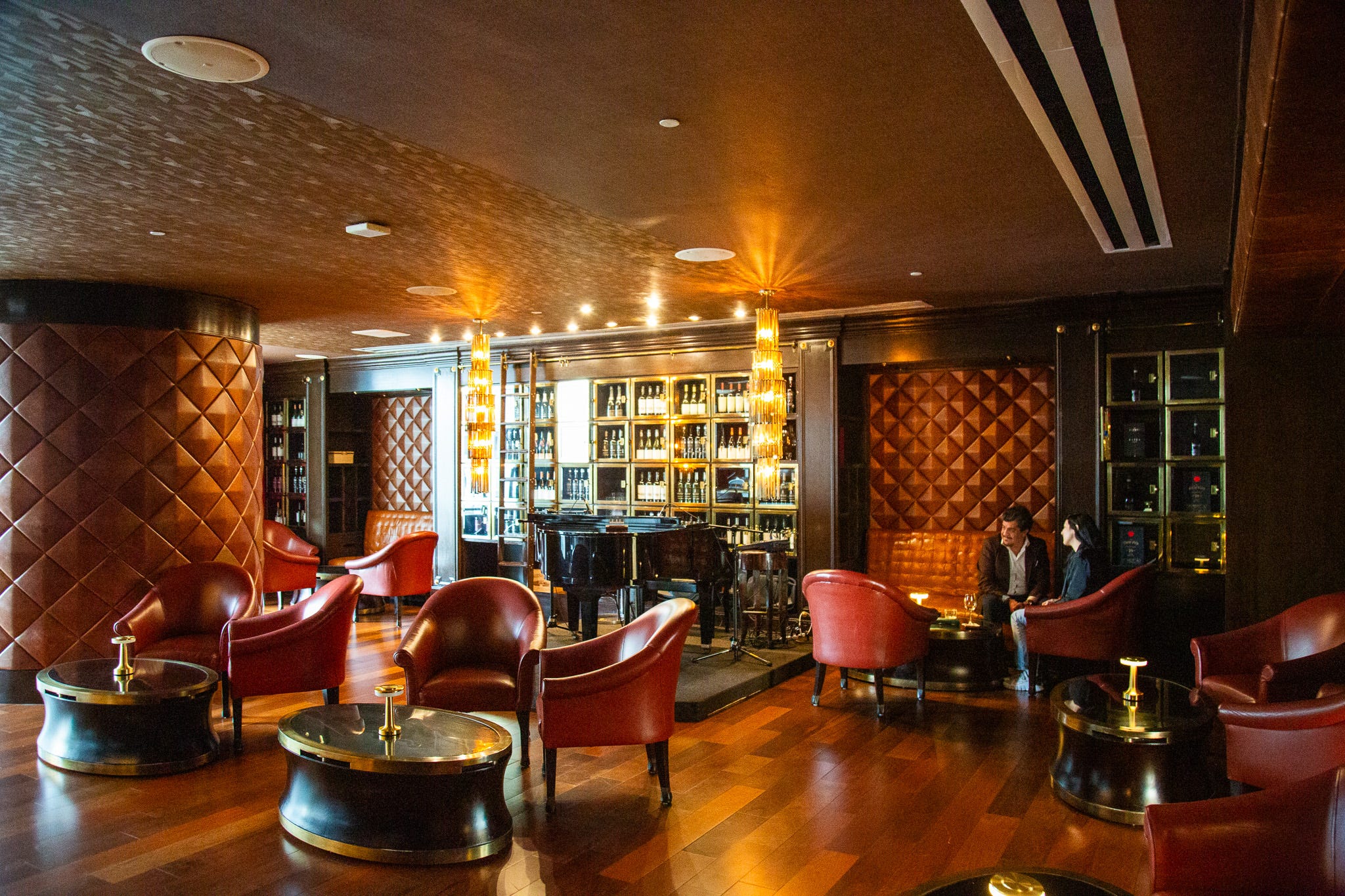
Hotel guests have access to amenities like a gym and spa. Plus, they can access other parts of the building, like the casino on the top floors.
Before the sun sank below the horizon, Moises Muñoz, the international sales manager at the JW Marriott Panama, gave me a tour of the building.
He compared it to a cruise ship, where everything you need is in one place.
We explored the commercial area downstairs, where real-estate offices, restaurants, salons, and businesses are located.
Inside the hotel, there's a spa and gym, which both hotel and condo guests can use. The Marriott is also home to the restaurant Masi and a Cava 15, a bar designed in conjunction with Louis Vuitton, Muñoz said.
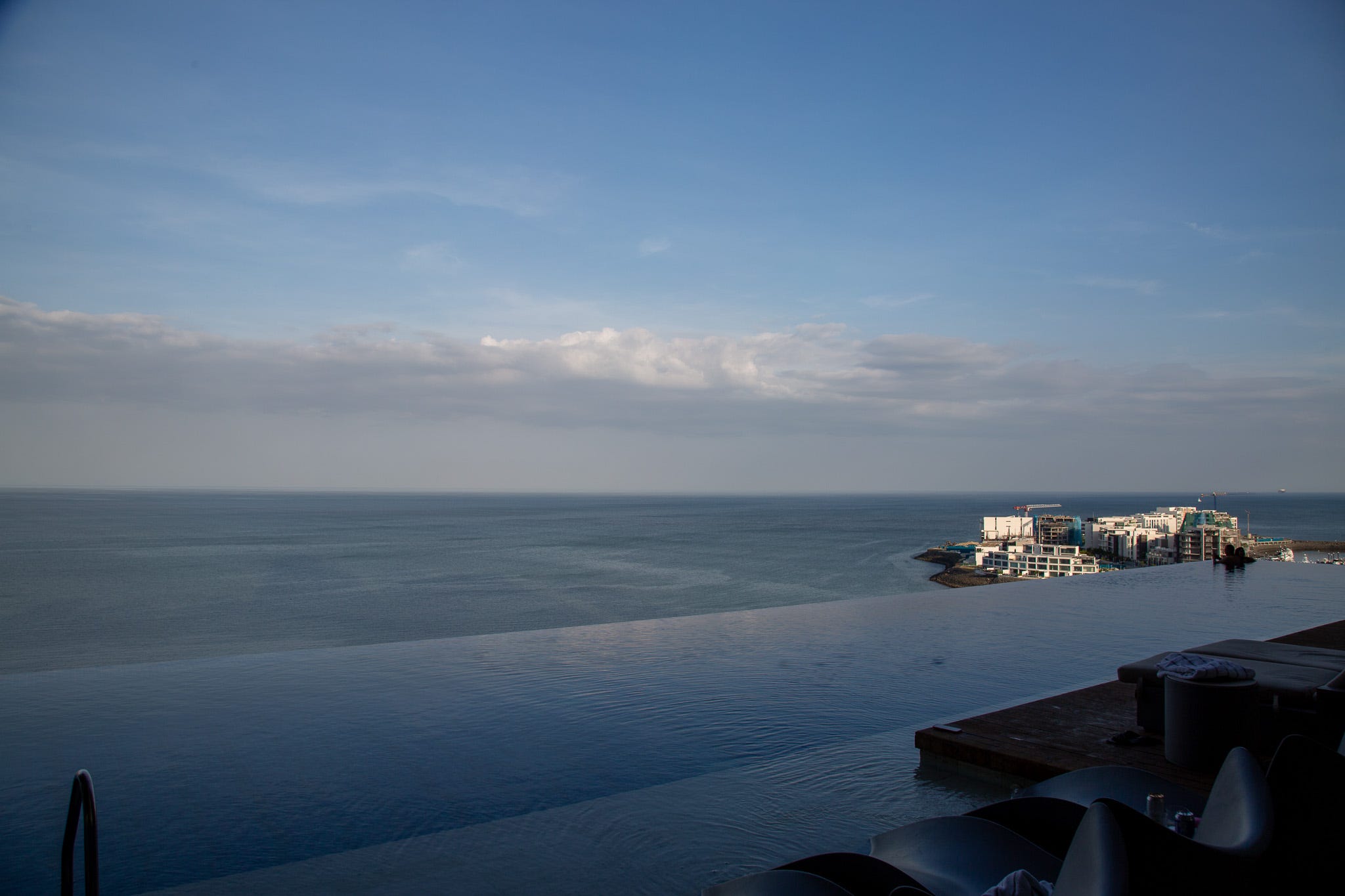
The most impressive part was the infinity pools with seamless views out onto the ocean.
While luxury details such as a glass elevator and executive lounge heightened the stay, the most impressive part of the hotel was its two infinity pools.
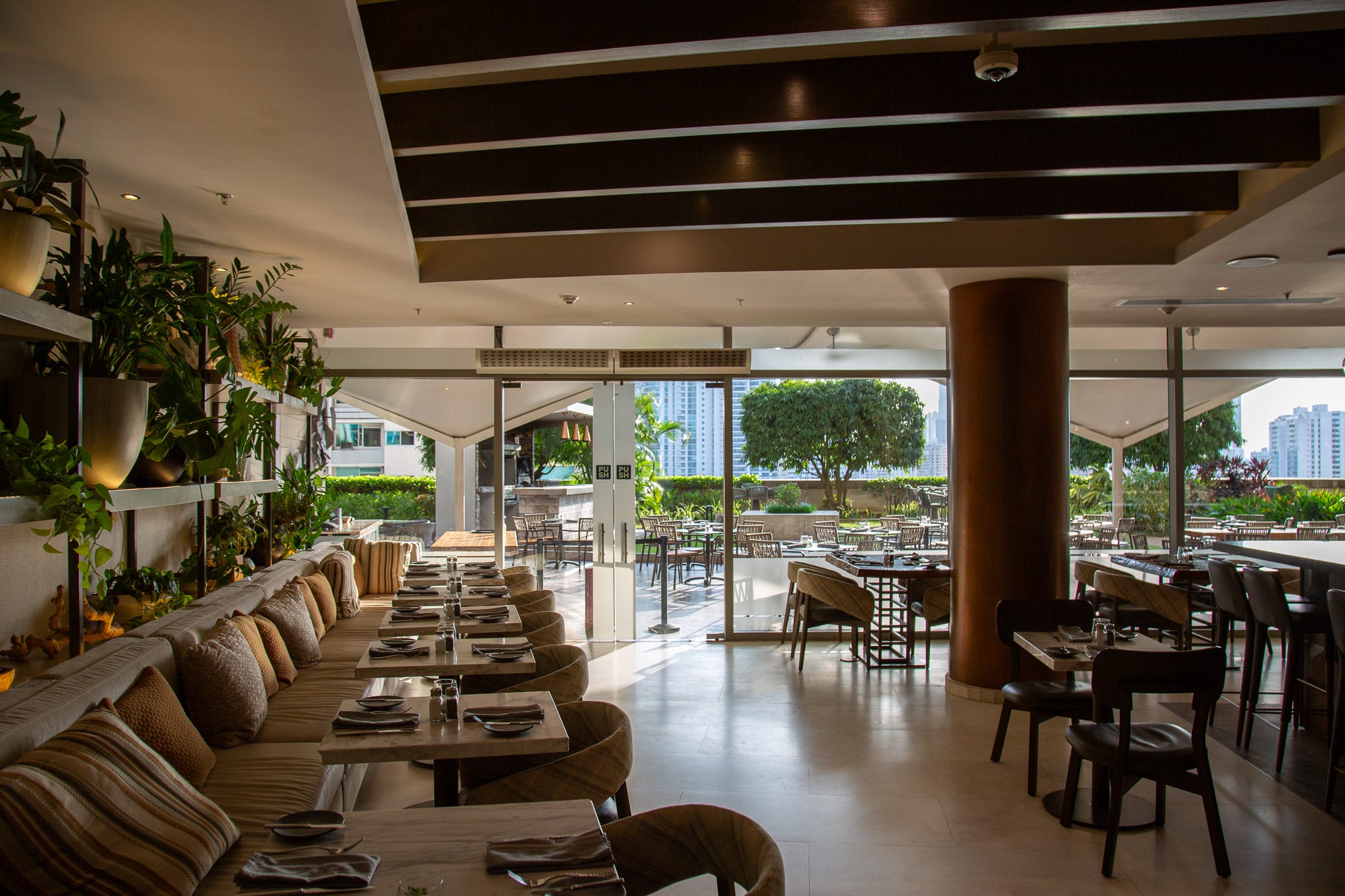
Later that evening, I dined on fresh ceviche at the hotel's restaurant Masi.
While it was tempting to order room service and dine on my meal from the luxury of my executive suite, the lush oasis at the hotel's Masi restaurant called my name.
The restaurant serves Panamanian and Latin American cuisine. I ordered a trio of different ceviches alongside a pumpkin dish. Each bite had the ideal balance of citrusy and fresh flavors.
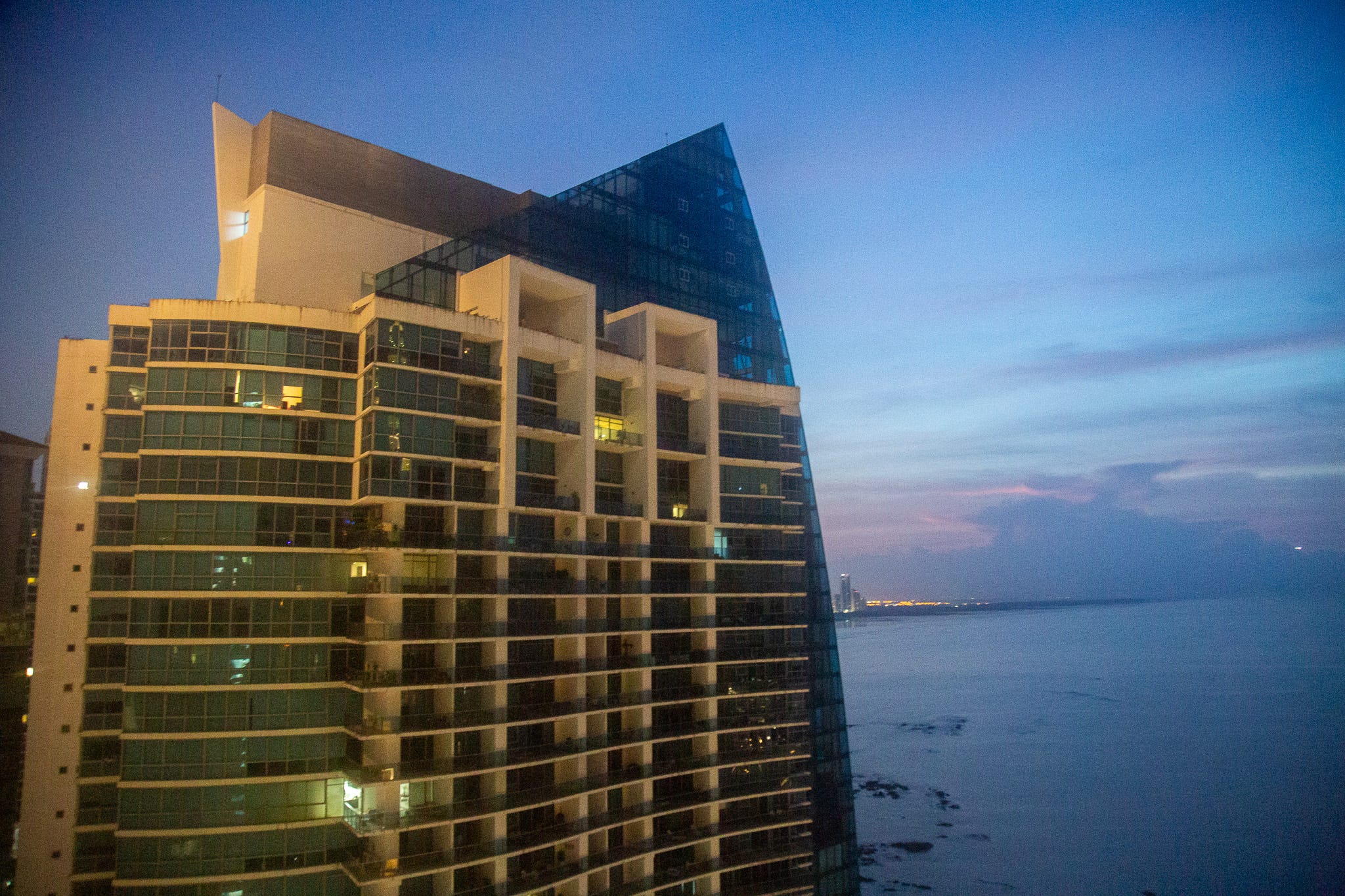
Before I went to bed that night, I noticed that only a handful of the hundreds of condos had their lights on.
McGowan explained that many of Punta Pacifica's condo owners don't live there year-round. Instead, it's a second, third, or even fourth home for the residents.
They might escape to Punta Pacifica during the winter or stay for a few weeks at a time. McGowan also added that most of Punta Pacifica's residents are foreigners.
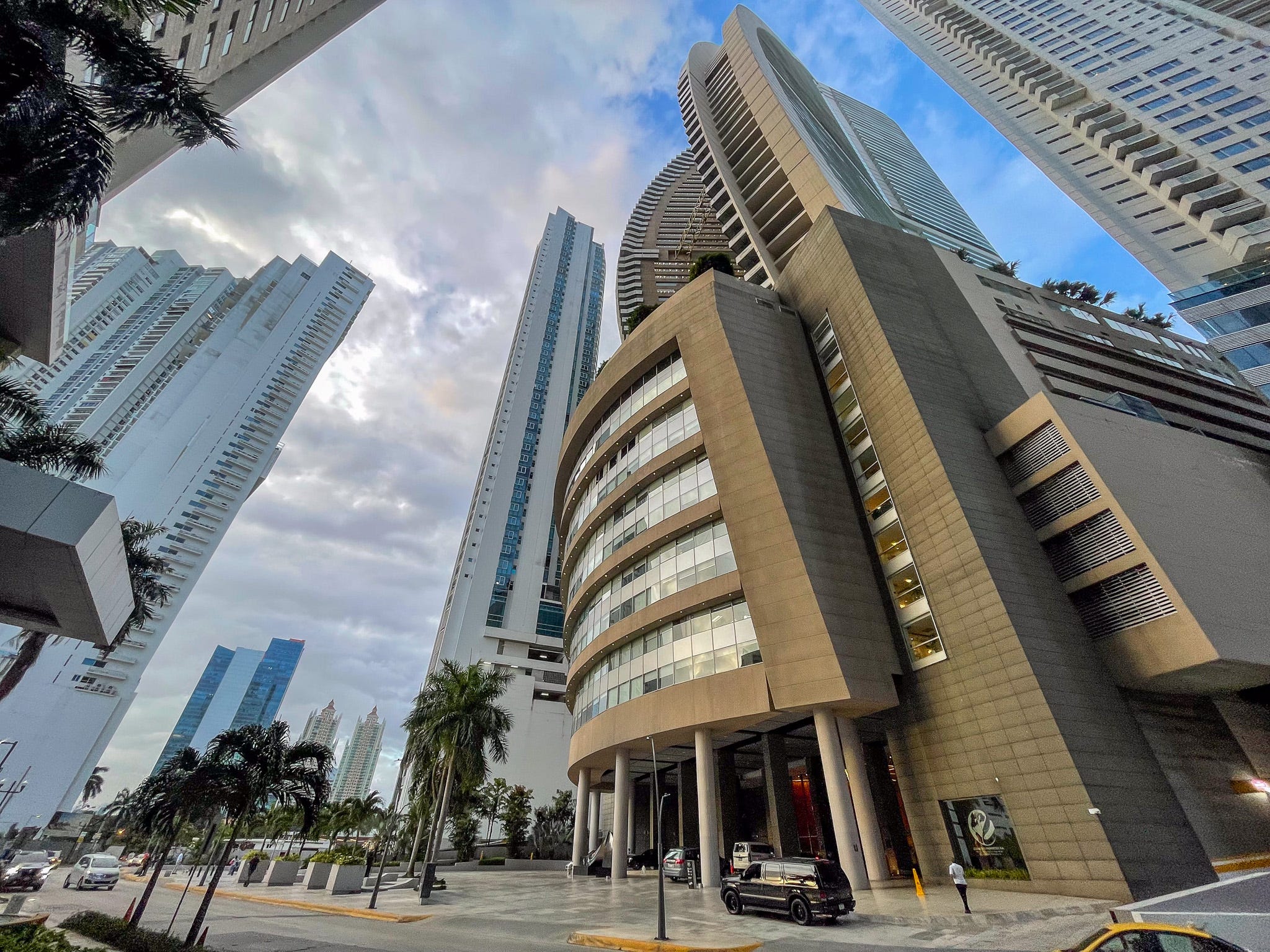
McGowan said that even with its past, The Ocean Club is still one of the most luxurious condominium towers in the country.
McGowan said the building remains one of Punta Pacifica's luxury staples, adding that owning a condo there is like living in a high-end hotel.

Later, I explored the rest of the neighborhood.
Stepping outside the hotel, it was impossible to know the ocean was just a few hundred feet away. Instead, nearly every direction was filled with skyscrapers.
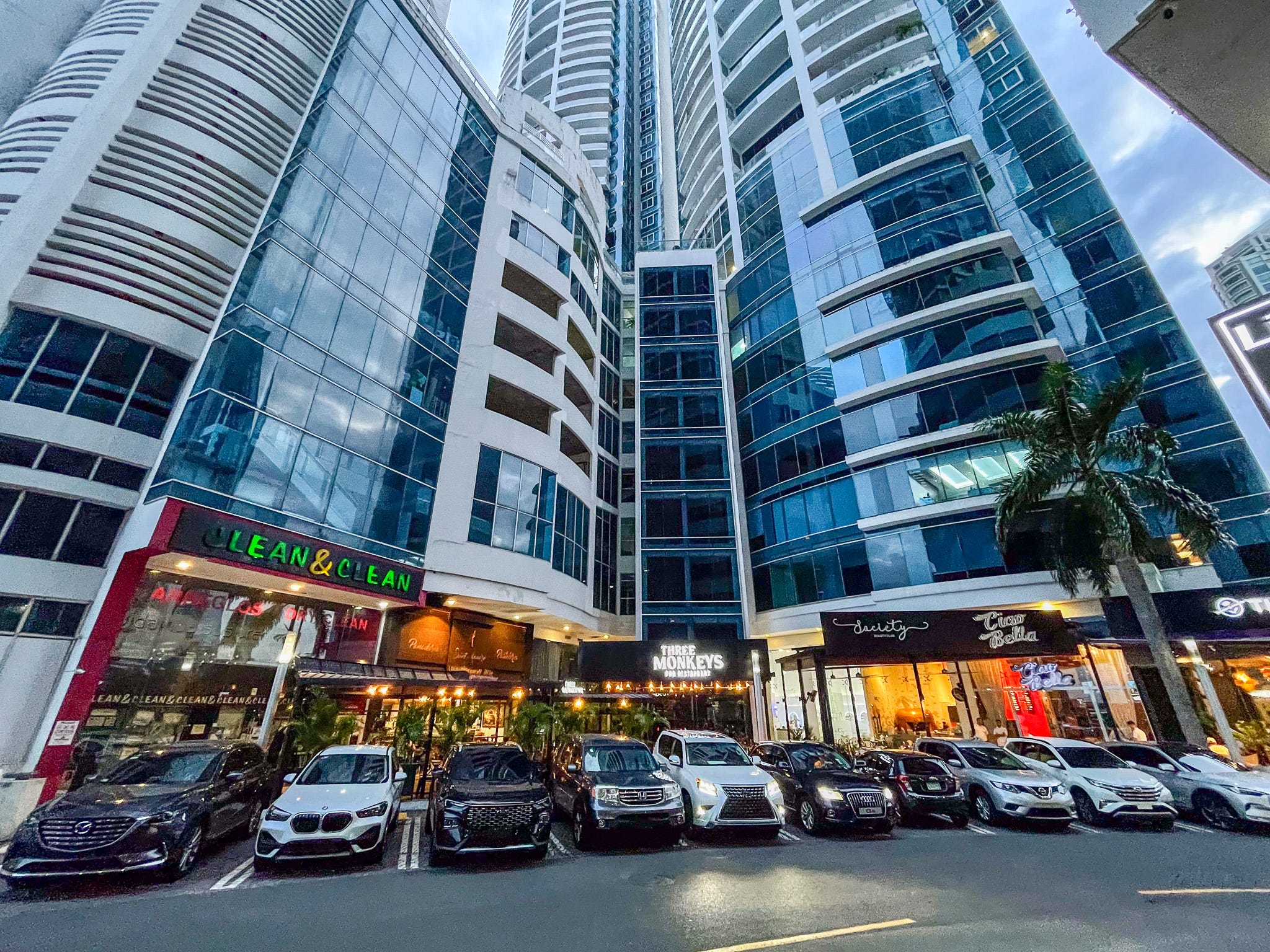
As I explored the small neighborhood, I spotted just a handful of stores and restaurants.
I covered most of the neighborhood in less than an hour. Along the way, I spotted dog parks with designer pooches, pristine playgrounds for children, and lobbies with spiraling staircases and impressive chandeliers.
It was clear that the area oozed wealth.
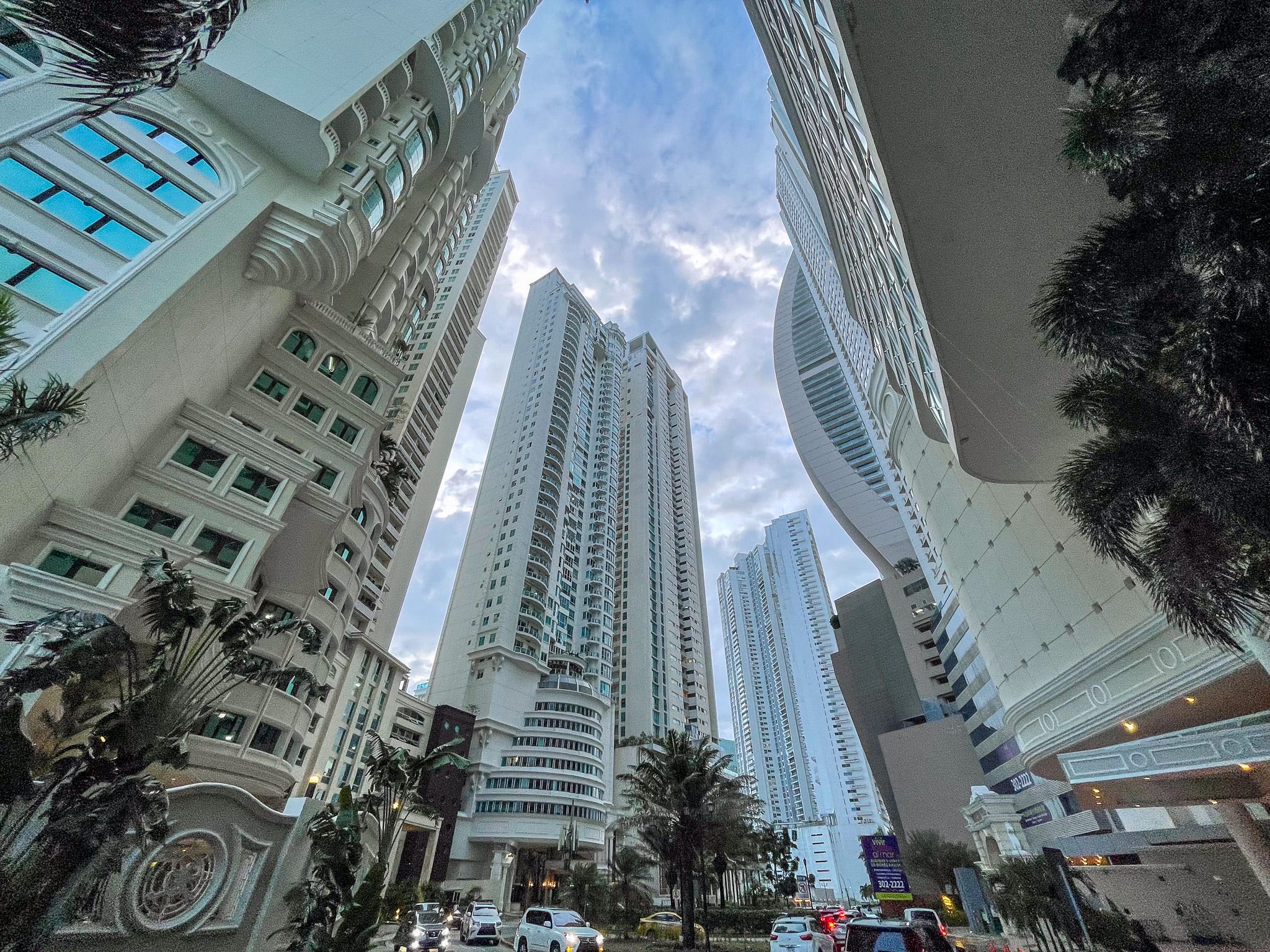
McGowan said that while it's a dense area, it often feels like a quiet neighborhood.
"I love this neighborhood," McGowan said. "I don't think I would move to another neighborhood in Panama City. This is the neighborhood I consider home."
Punta Pacifica has everything McGowan needs. There are stores, some of the city's top restaurants, and the ocean just around the corner. Everything is within walking distance, and McGowan has gotten to know his neighbors there.
"I bought myself a new car in August. I was driving it yesterday morning, and when I looked the car had 2,100 kilometers on it," he said.
And if he does need to drive, McGowan said Punta Pacifica is close to other popular areas in Panama. You're a short drive to Casco Viejo and other downtown parts of Panama City.
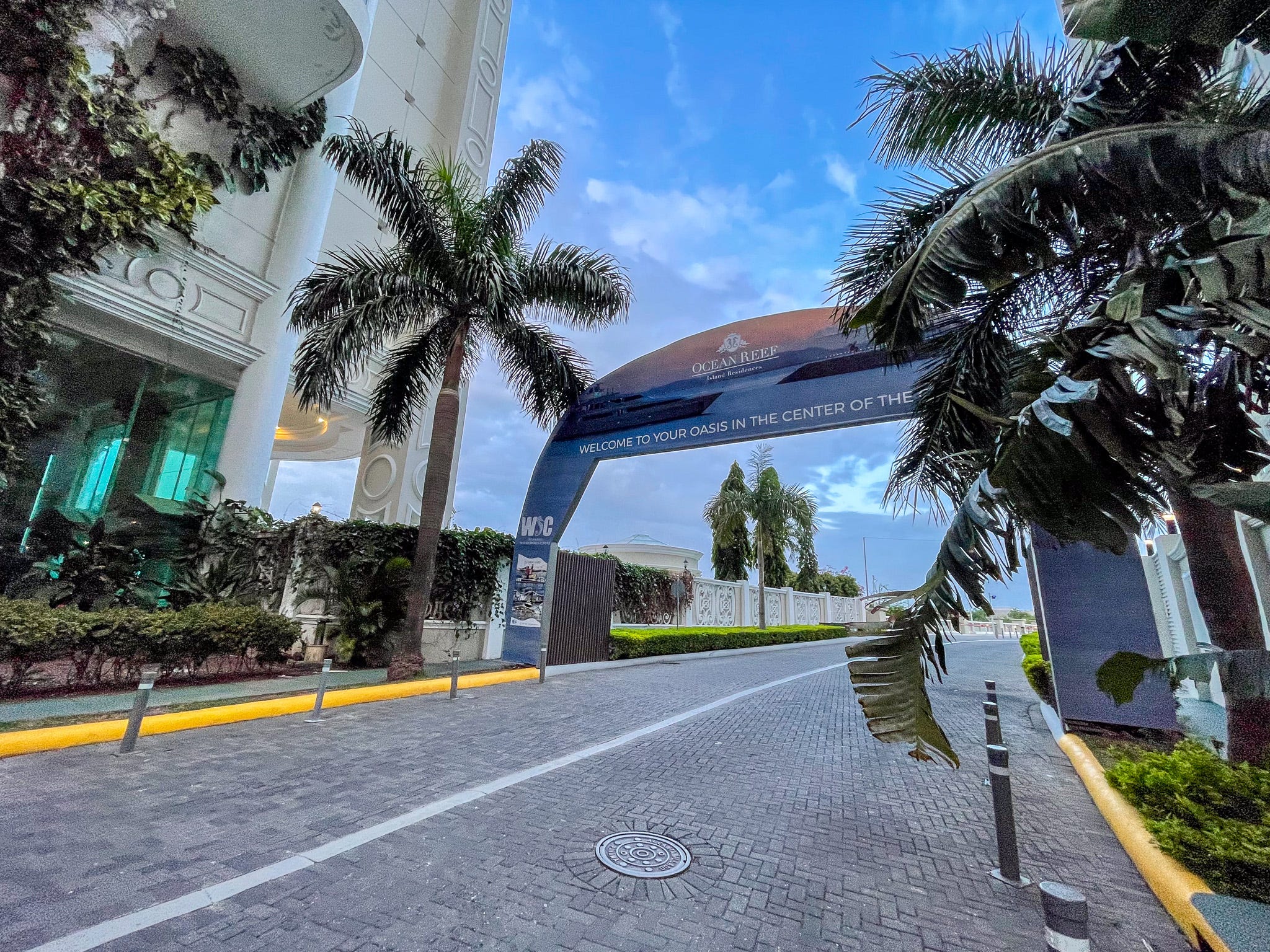
To wrap up my exploration, I headed to the most luxurious part of Punta Pacifica: the Ocean Reef Islands.
A short, narrow bridge leads to two small artificial islands, where the most expensive properties in Punta Pacifica are located.
"Ocean Reef Islands, today, is Panama's most expensive neighborhood in price per square meter," McGowan said, adding that the average price per square meter there is $7,000.
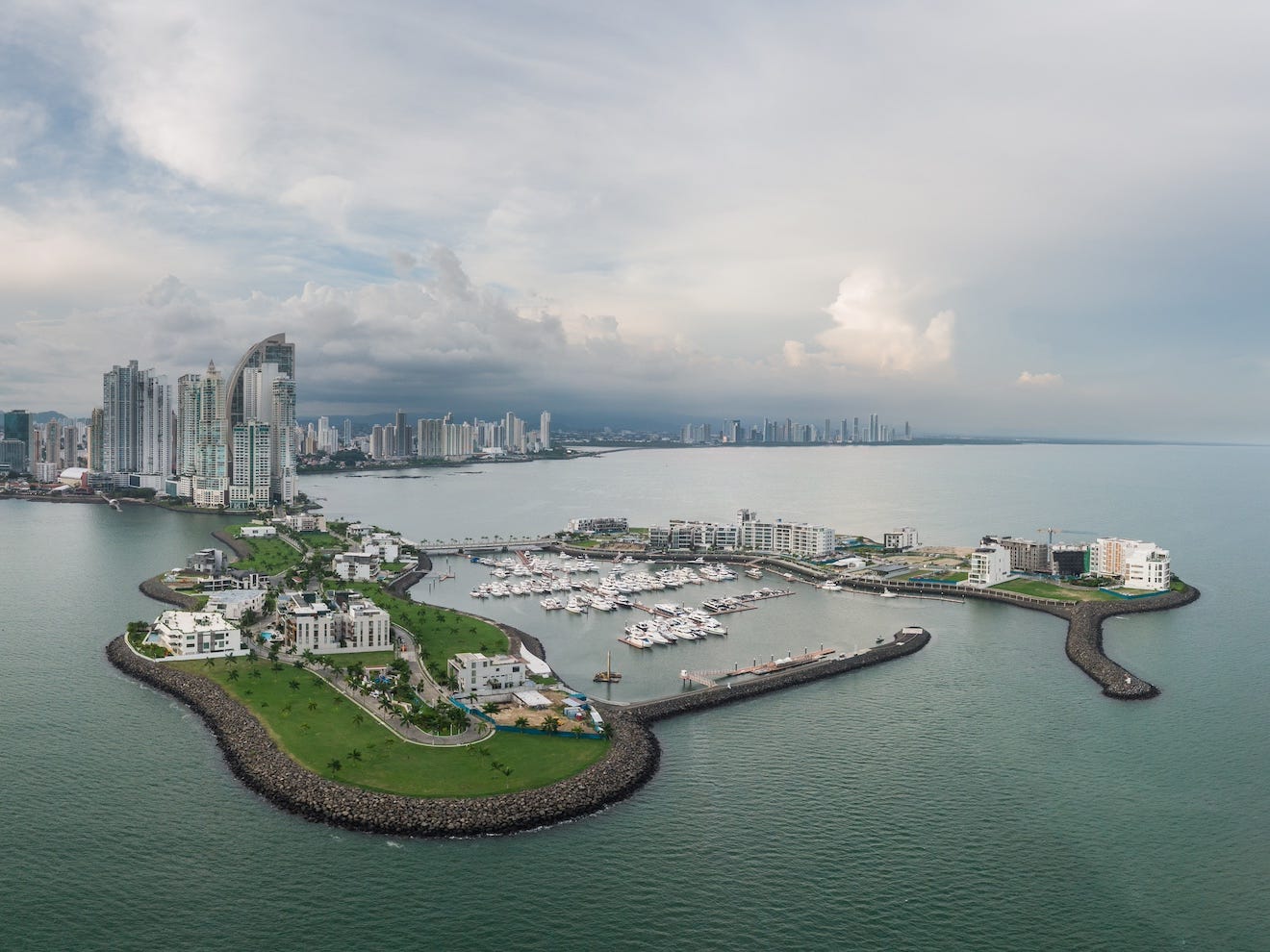
The man-made islands cater to Panama's ultrawealthy residents.
According to The New York Times , Empresas ICA announced plans to construct the two islands in 1998, around the same time the creation of Punta Pacifica was announced. Grupo Los Pueblos, a Panamanian company, was hired by Empresas ICA as the project's developer.
The project was largely completed in 2016, McGowan said.
"It is more expensive because they had to create the islands," McGowan said. "So the land itself has more value."
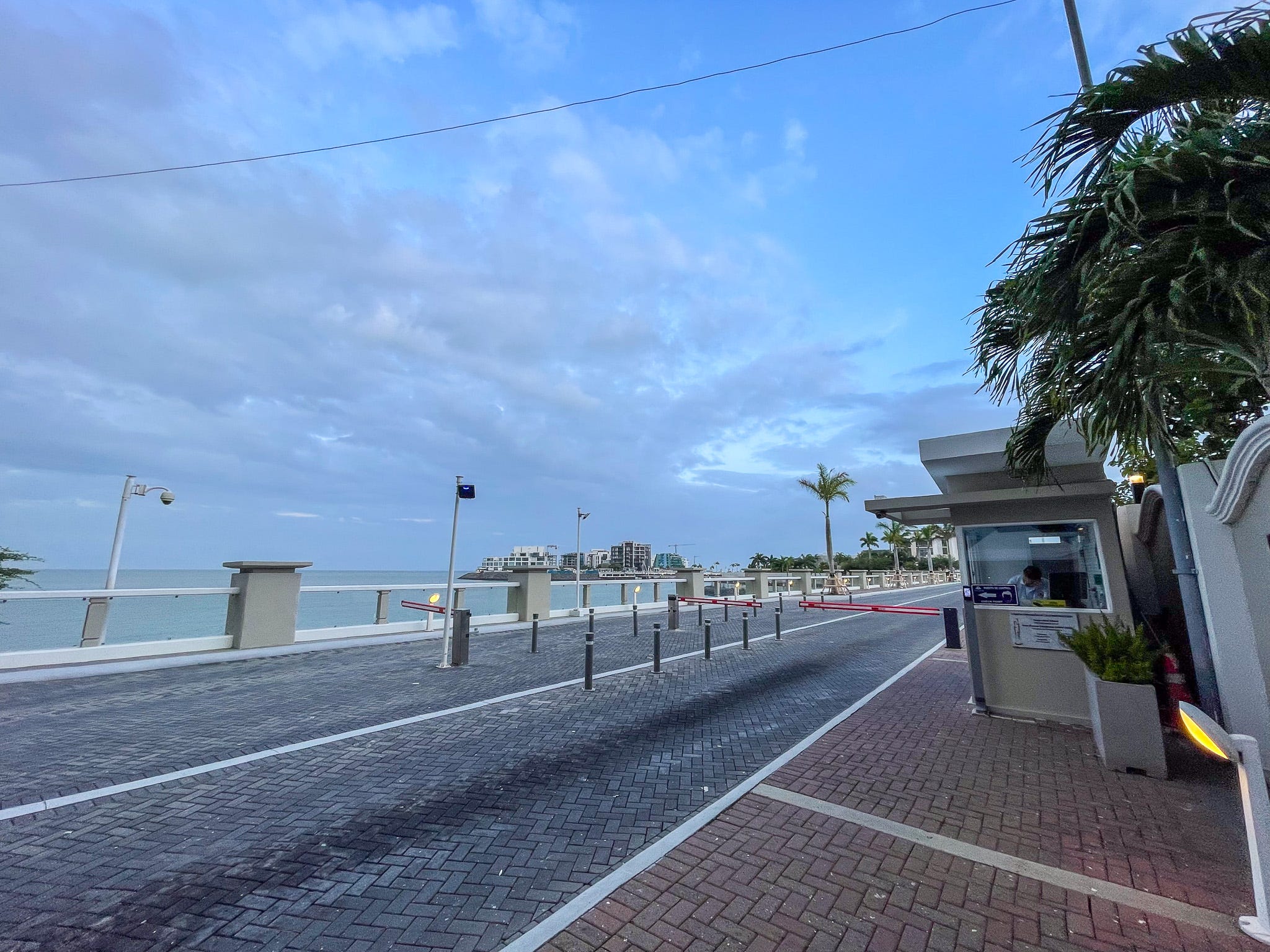
My walk was cut short; only residents and guests could enter the islands. McGowan painted a picture of the area for me.
He said the two islands have a slightly different feel because they're zoned differently.
One island is predominantly zoned for homes, while the second has more condominiums with taller buildings.
Currently, McGowan said the developers are in the last stage of the project, which is building the commercial component of Ocean Reef. This will include stores, restaurants, spas, and fitness centers.
These operations are catered to and supported by the island's residents since no one else can visit.
Between the islands is the yacht club and marina, which McGowan called the "jewel of the island." On a typical workday, the marina is teeming with yachts. Come Saturday, however, the island is deserted, with its yacht owners all out exploring nearby islands.

Ultimately, McGowan said the Ocean Reef Islands offer a tropical escape from Panama's bustling city life.
McGowan said stepping onto Ocean Reef Islands is peaceful. There's always a breeze, and bird songs fill the air.
"You really do feel like you're on a tropical island," McGowan said. "But you turn your head and look back to the city and see a massive skyline."
It's the best of both worlds, McGowan said.
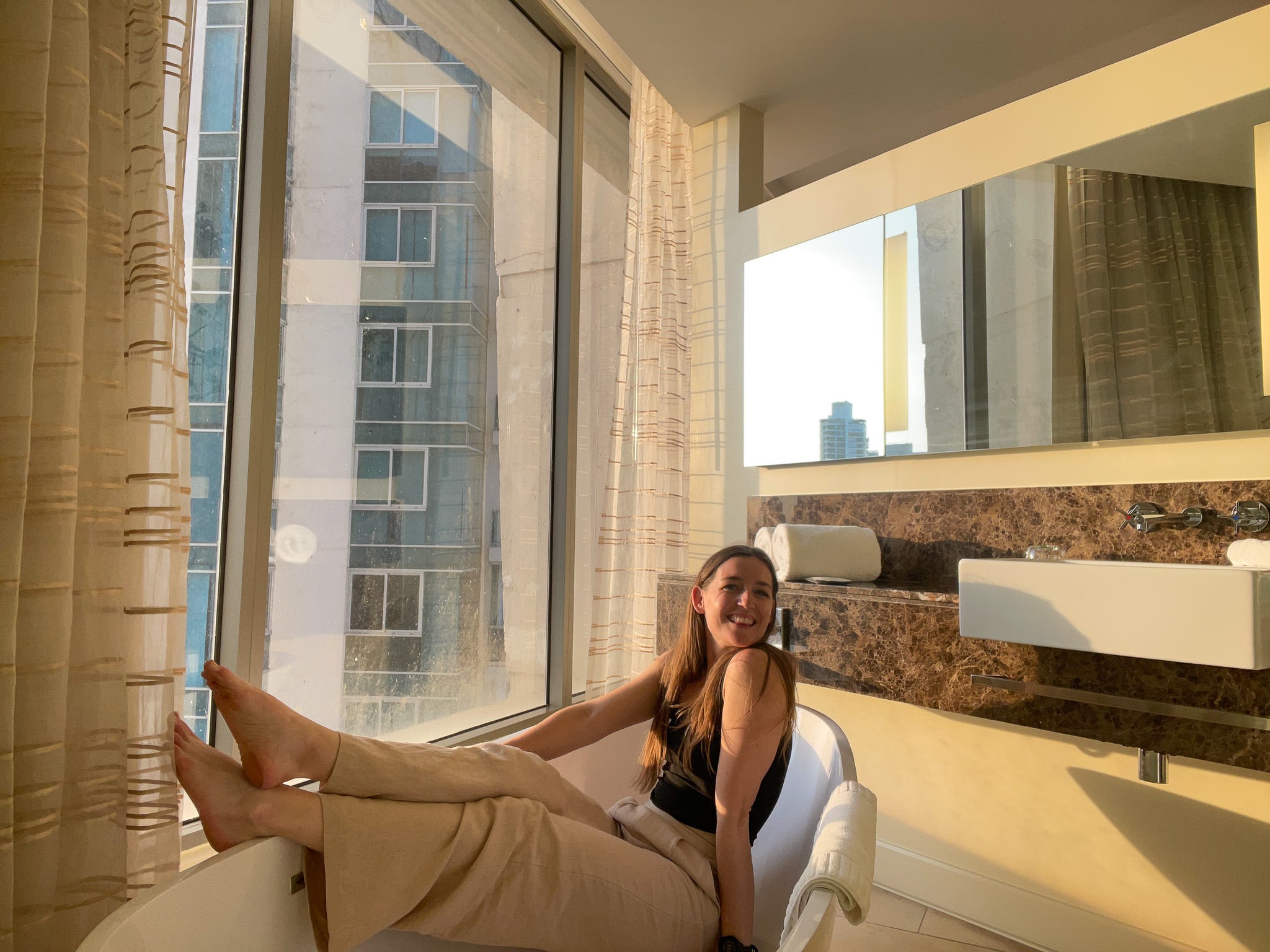
Between yacht clubs and infinity pools, a night in Punta Pacifica highlighted how the city's wealthy live.
After less than 24 hours in the neighborhood, I tasted fresh ceviche, swam in the most luxurious pool of my life, and saw impressive condos people spent years dreaming of.
It's easy to see how this neighborhood earned its reputation as the Miami of Panama, but just as McGowan said, the neighborhood is truly its own unique oasis.
And you have to visit to experience it.
More for You
Alvin Bragg Announces New Indictment
30-Minute Recipes That Feed a Crowd
‘They’re not having kids’: NYU professor Scott Galloway says young Americans are struggling and ‘have every reason to be enraged.’ Do you agree?
It’s not Tiffy Time in WWE
14 Movies So Profound They Forever Changed Their Viewers
Biden’s Morehouse speech exposes his 2024 political problems
Housing Price Drop Likely In these 20 Cities
Is It Better to Take Social Security at 62, 67, or 70? An All-Encompassing Study Offers a Clear Answer.
The Wendy's Chili Fact You Need To Know Before Ordering
'Bear down' and 'be as frugal as you can': Here are 3 ways to ride out a recession according to boomers
75 Best Breakup Songs of All Time
Kyrie Irving Makes NBA History in Game 6 Win over Oklahoma City Thunder
23 Weird Things People Think Only Their Families Did
The 50 Greatest Creature Feature Movies of All Time
This 30-year-old won the NYC housing lottery and pays $1,000/month for a luxury 1-bedroom apartment—take a look inside
Giant lake suddenly returns 130 years after vanishing
Fanatics files suit against Cardinals WR Marvin Harrison Jr.
Here is the true value of having a fully paid-off home in America — especially when you're heading into retirement
14 Great Places to Live if You Are Broke
The Best Snacks at Disney World to Try on Your Next Visit

IMAGES
VIDEO
COMMENTS
1. Luxury Yacht. Yachts are normally classified as any watercraft that can be used for pleasure or sport and can range from 30 ft to over 100 ft. While a yacht can be as small as 30 ft. long, a yacht is often considered a cabin cruiser until it is 39 ft. or more, then it is considered a proper yacht.
The Sailing Yacht A, initially known as Project 787 'White Pearl,' was delivered by Nobiskrug to her owner, Andrey Melnichenko, in 2017. As the world's largest sailing yacht, she measures an impressive 143 meters (469 ft) in length with a beam of 25 meters (82 ft). Featuring eight decks, SY A can accommodate 20 guests and a crew of 20.
A superyacht is a luxury yacht with high-end amenities and extravagant features. These yachts often offer spacious cabins, multiple decks, swimming pools, helipads, and other luxurious facilities. FAQ 4: What is the average size of a yacht? Yachts can vary greatly in size. The average size of a yacht ranges from 30 to 60 feet.
Yachts can range up in size astonishingly. Any yacht that is 79 feet long or longer is classified as a "large yacht." Beyond a length of 130 feet, the vessel is typically called a "super yacht" (sometimes written as one word, superyacht).
Common Motor Yacht Sizes: 40-49 Feet >>> Perfect size yacht for couples and small families. Motor Yachts in the 40-50 foot range make great starter yachts and can be owner operated. In this range, motor yachts will typically highlight 1-3 staterooms, sleeping anywhere from 2-6 people. 50-59 Feet >>> Motor yachts 50-60 feet are great for larger ...
Yachts of this size will need 4-6 crew members: yacht captain, one or two deckhands, one or two stewardesses, a yacht chef, and presumably an engineer. 22-40 meter long motor yachts normally can host up to 8 guests.
This list of motor yachts by length, is a table of the world's longest active superyachts, with an overall length of at least 75 metres (246 ft) and up.. These boats are also known as "megayachts", "gigayachts" and even "terayachts", usually depending on length. It has been generally accepted by naval architects and industry executives that superyachts range from 37 m (≈120 ft) to 60 m (≈ ...
Cruising: 16 knots (30 km/h) Top: 21 knots (39 km/h) Range. 5,340 nmi (9,890 km) Crew. 54. Sailing Yacht A is a sailing yacht launched in 2015. [2] The vessel is a sail-assisted motor yacht [3] designed by Philippe Starck (exteriors and interiors) [4] [5] and built by Nobiskrug in Kiel, Germany for the Russian billionaire Andrey Melnichenko. [6]
Al Said - 509 FT. (155M) Prince Abdul Aziz - 482 FT. (147M) El Mahrousa - 475 FT. (145M) First, let's take a look at the new king - now the largest motor yacht in the world: 1. SOMNIO- 728 FT. (222M) Somnio will be the world's first 'yacht-liner'. Image credit: Winch Design. Due for launch in mid-2024, Somnio is expected to ...
Size Matters: The Various Yacht Size Categories. Yachts typically fall into specific size ranges, each offering its own unique set of benefits and considerations: Day Sailing Yachts: Under 30 feet in length, these are ideal for casual trips close to shore. Weekender Yachts: Typically 30-40 feet, they offer basic cabins suitable for short stays.
Step into the role of a discerning buyer with our expert guide, crafted to aid you in choosing the ideal yacht size and capacity to complement your needs. Dive into the dynamics of yacht dimensions and how they impact everything from dockage options to entertainment spaces, ensuring a fit tailored to your social and navigational preferences. Our insights will help you determine the optimal ...
IYC'S GUIDE TO YACHT TYPES Having decided to purchase or charter a yacht, the wealth of choice of different yacht types is huge.The good news is that such a big range of different yacht sizes, styles, performance capabilities, and purposes mean that there truly is a yacht for everyone.
Understanding The Importance Of Size. Size is more than just a number when selecting a yacht from companies similar to YACHTZOO. It's about matching your needs with the capacity and capabilities of the vessel. Smaller yachts, typically under 40 feet, offer intimacy and are easier to navigate, making them ideal for close-knit groups or family ...
Determine the yacht size that best suits your needs by considering key factors like intended use, guest capacity, and budget. Learn how the size impacts maintenance, operational costs, and staffing requirements. Explore the balance between comfort and manageability, with practical advice on how to assess your own boating experience and potential crew needs. With informed decision-making, find ...
Joining online yacht groups like those on Facebook and Twitter is a great place to seek answers when deciding on the right size yacht. Most yacht groups have some knowledge on the subject. The same goes for online forums like Reddit and Quora; a wealth of information at your fingertips if you ask the right people the right questions.
Megayacht - Generally any vessel over 200 feet long. Until about a decade ago these were considered the largest private yachts in the world. However, the envelope has continued to be pushed and now these are the second tier in terms of size. Gigayacht - A newer term coined to describe yachts over 300 feet in length.
Living Aboard Motor Yachts. For a solo nomad, the ideal size sailboat to live on would be 35 feet for most people. However, if you are planning to live aboard a boat with a family, you will need a boat between 45-50 feet. Any boat below 35 feet would be too cramped for living, and you would quickly get cabin fever.
Yachts can further be defined as a superyacht or megayacht, depending on their size. Super Yachts are typically 24 meters (78 feet) and above. Mega Yachts are typically over 80 meters (260 feet). Most motor yachts on the market are typically 24 meters (78 feet) or less. There are only a handful of megayachts in the world due to their ...
Yacht. A 45-foot cruising yacht in 2010. The superyacht Azzam, the longest private yacht, as of 2018. [1] A yacht ( / jɒt /) is a sailing or power vessel used for pleasure, cruising, or racing. [2] [3] [4] There is no standard definition, though the term generally applies to vessels with a cabin intended for overnight use.
The crew size can vary greatly depending on the yacht's size, amenities, and intended use. In general, larger yachts will have a larger crew, while smaller yachts may only require a few crew members. For example, a small yacht that is used for day trips or short-term charters may only require a captain and a mate. However, a larger yacht used ...
The size of yacht needed to safely and comfortably cross the Atlantic Ocean will depend on factors such as the number of people on board, the type of voyage, and the experience of the captain and crew. Generally, the vessel should be a minimum of 36 feet in length and have enough stowage capacity to carry enough supplies and provisions for the ...
For aspiring yacht owners looking for a luxury yacht for sale, we have put together a fine selection of luxury yachts and megayachts for sale from all over the world. Search BOAT International's collection of superyachts for sale and filter by type, length, asking price or age. Narrow the results by selecting specific features, or browse by ...
Defining a Yacht. Size is the primary factor in determining if a boat can be considered a yacht. While there is no official point at which a boat becomes a yacht, anything over 40-feet in overall length could conceivably be considered a yacht. In addition, as you move bigger in size, you will probably get into "mega-yacht" or "superyacht ...
When it comes to operating a yacht over 80 feet in length, a crew is necessary. The size and number of the crew will depend on the needs of the yachts owner, as well as the size and type of yacht. Common crew members can include a captain, engineer, mate, deckhand, steward or stewardess, and chef.
Project Tanzanite will leave these three in the dust in terms of size, boasting a whopping 394 feet (120 meters) in length and a beam of 55.7 feet (17 meters). ... If you prefer referring to ...
Choosing the right boat size for ocean travel involves considering various factors, including budget, comfort, safety, and the level of expertise required. Small boats offer affordability and maneuverability but come with limitations in space and stability. Mid-size boats strike a balance between comfort and accessibility but may have higher costs.
Etienne Constable's boat alongside the painted fence by Hanif Panni. Courtesy Hanif Panni, @hanifwondir.
The $300 million yacht, which was seized in 2022 and is docked in San Diego, cost $922,000 a month to maintain, a court filing showed: $360,000 for crew salaries, $75,000 for fuel, $144,000 for ...
The same views could be seen from the king-size bed. The suite was spacious, with two of the room's four walls lined with windows. ... Between the islands is the yacht club and marina, which ...